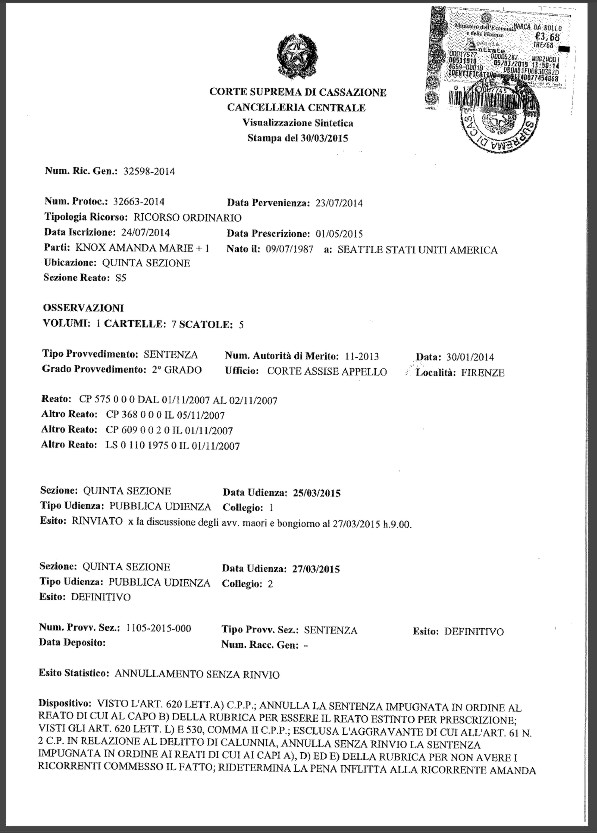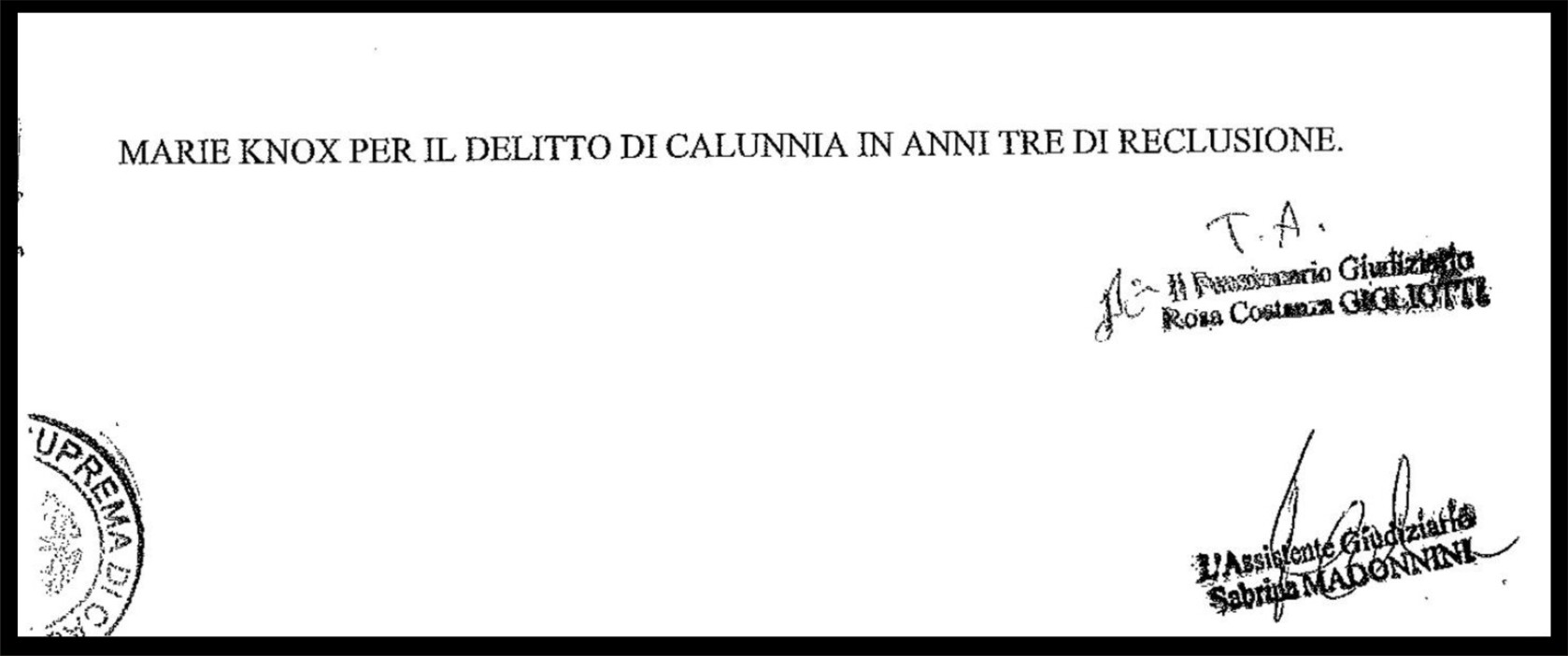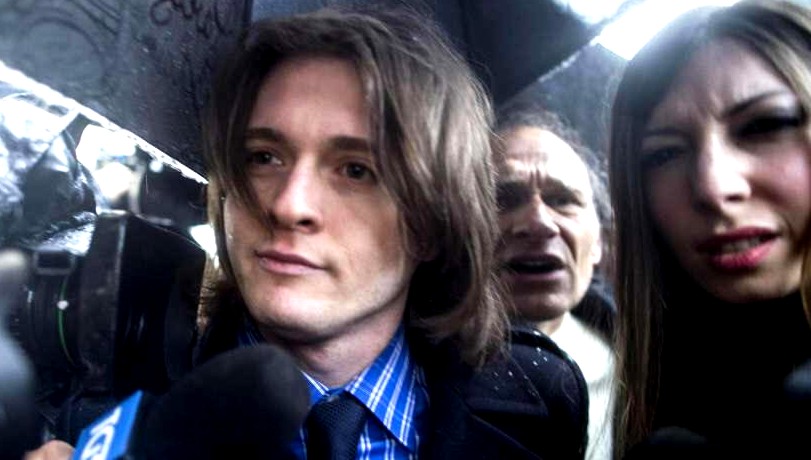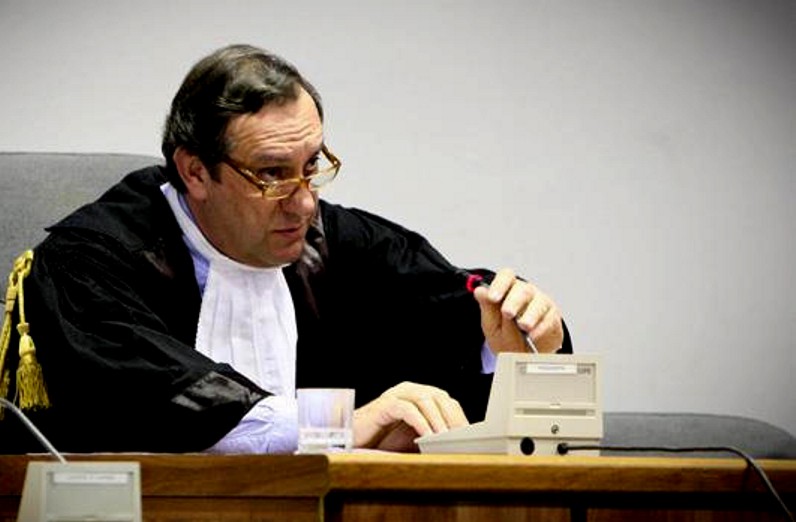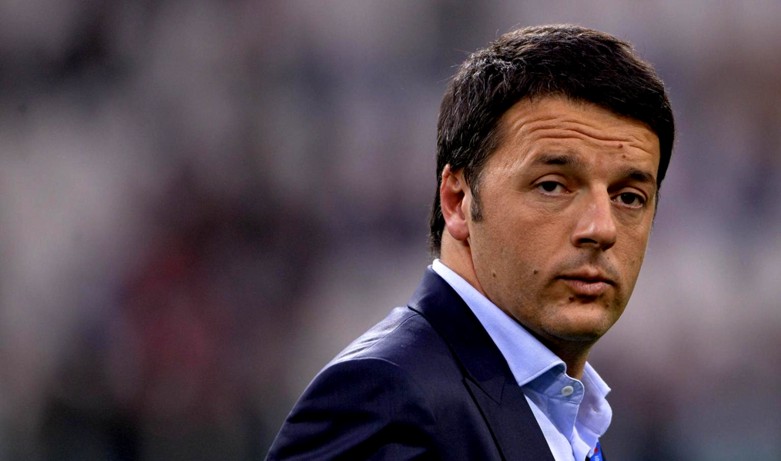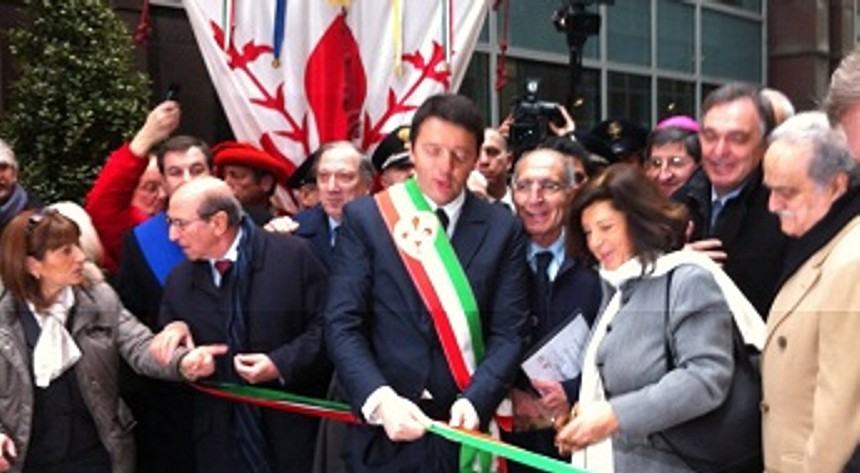
Headsup: The deep expose with associated comments below was first posted by Finn MacCool on 12/20/13. Knox's failed calunnia trial in 2009, failed 1st appeal in 2011, and failed final appeal in 2013 had come and gone. Some 500 zombie misrepresentations had recently reappeared in Knox's English-only 2013 book. See main support documents here and also (vitally) this and this and this.
Category: Florence 2014+
Friday, June 26, 2015
What No-Show Amanda Knox SHOULD Have Emailed Judge Nencini As Truthful Testimony in December 2013
Posted by Chimera

As the real thing really didnt work any better for Knox…
As is well known, Amanda Knox refused to attend her own appeal in Florence in 2013/2014.
This was a defence appeal by Knox herself and Sollecito against the 2009 conviction by Judge Giancarlo Massei’s trial court. It was not a new trial, or a retrial, or even a prosecution appeal. It was an appeal DEMANDED by Knox and Sollecito.
While Knox refused to attend, she did send a long, rambling email to Lead Judge Nencini. Judge Nencini tartly read out the email in court, and remarked that she could have delivered this in person and answered questions if she wanted it credibly on the record - after all, Sollecito was sitting right there and not scared out of his wits.
Kudos to fellow main posters Finn MacCool and SeekingUnderstanding for their original and well done posts on this ‘‘submission’‘
With a bit of fact checking, Knox’s email could have looked to the court and the media more like this. Enjoy.
Court of Appeals of Florence section II Assise Proc. Pen, 11113
Letter sent to attorneys Carlo Dalla Vedova and Luciano Ghirga via email Seattle, 15 December 2013
Attn: Honorable Court of Appeals of Florence
1. I have no doubt that my lawyers have explained and demonstrated the important facts of this case that prove my innocence and discredit the unjustified accusations of the prosecution and civil parties. I seek not to supplant their work; rather, even though I am not present to take part in this current phase of the judicial process, I feel compelled to share my own perspective as a six””year-long defendant and causation of Meredith’s injustice.
2. The Court has access to my previous declarations, and please disregard that whole ‘‘aggravated calunnia’’ in which Cassation says i framed Patrick to divert attention, or that pending calunnia charge claiming I falsely accused the police to sabotage the court proceedings. I trust you will not be blinded by these things to come to this verdict. I must repeat: I am innocent. Because repeating it will help dissuade you from studying my lies too carefully.
3. According to my lawyers: I am not a murderer, I am not a rapist, I am not a thief or a plotter or an instigator, at least not until Cassation signs off on it. I did not kill Meredith or take part in her murder or have any prior or special knowledge of what occurred that night, (other than screaming, slit throat, and that the body was moved). I was not there for part of the time, and had nothing to do with it.
4. I am not present in the courtroom because I am afraid. Frederico Martini is probably still pissed that I gave him up; the court and jail officials don’t like my book; and I think there is still an open warrant on me for calunnia. Also, without any employment or housing references, staying here may be tricky. I have faith in your judgement, but am worried you are so poor a judge you will be blinded my the Prosecution’s vehemence. I remember Judge Micheli: he was the wise Judge who found Guede guilty; he was the idiot Judge who ordered Raffaele and I to stand trial as accomplices.
5. My life being on the line, at least until I get parole, and having with others already suffered too much, I’ve rehearsed this story and attentively followed this process and gleaned the following facts that have emerged from the development of this case that I beg you not to dismiss when making your judgement:
6. No physical evidence places me in Meredith “˜s bedroom, the scene of the crime, because I define only that as the crime scene. My DNA mixed with Meredith’s was in the bathroom and Filomena’s room, not Meredith’s. Those bloody footprints cleaned away were in the hallway, not Meredith’s room. Raffaele had one knife, and this other was at his flat, neither of which is Meredith’s room. My lamp on Meredith’s floor had no fingerprints on it, and does not implicate me. That DNA on Merdith’s bra, and bloody footprint on the bathmat only implicates my alibi witness (who refuses to be questioned), not me. Those false alibis, false accusations, details I know about the crime, and phone records are not physical evidence, and did not happen in Meredith’s bedroom. Those ‘‘eyewitnesses’’ the Prosecution produced are not forensic evidence, and do not place me in Meredith’s room.
7. Meredith’s murderer left ample evidence of his presence in the brutal scenario, we made sure of that. Heck, the police couldn’t even find my fingerprints in my own bedroom.
8. No evidence places me in the same brutal scenario, again, which I restrict to Meredith’s bedroom, and only actual physical evidence. The prosecution has failed to explain how—with these restrictions—I could have participated in the aggression and murder””to have been the one to fatally wound Meredith””without leaving any genetic trace of myself. Just because i spend a lot of time talking about it, and am a C.S.I. fan, doesn’t mean I know how to remove evidence. That is because it is impossible. It is impossible to identify and destroy all genetic traces of myself in a crime scene and retain all genetic traces of another individual, or so C.S.I. has taught me. Either I was there, or I wasn’t. My analysis of the crime scene answers this question: I wasn’t there.
9. My interrogation was illegal and produced a false “confession” that demonstrated my non-knowledge of the crime- The subsequent memoriali, for which I was wrongfully found guilty of slander, did not further accuse but rather recanted that false “confession.” Yes, I wrote out a false ‘‘confession’’ that accuses someone else. Just as I testified to the prosecutor in prison and to my family members in prison when our conversations were being recorded without my knowledge. Dammit, give me some privacy.
10. My behavior after the discovery of the murder indicates my innocence, if you think creatively enough. I did not flee Italy when I had the chance, because (in my November 4th email), the police wouldn’t let me leave. I stayed in Perugia and was at the police’s beck and call trying to think of answers for over 50 hours in four days, convinced that I could help them find the murderer, or at least someone who was ‘‘close enough’‘. I never thought or imagined that repeatedly changing my story would fuel their suspicions. I did not hide myself or my feelings: when I needed sex, Rafael ‘‘embraced’’ me; when I was scared of being exposed, I cried; when I was angry that it wasn’t working, I swore and made insensitive remarks; when I was shocked, I paced or sat in silence, at least until I could find a new ‘‘best truth’‘; when I was trying to help, I evaded questions, consoled Meredith’s friends, especially her male friends, and tried to keep a positive attitude that this would blow over.
11. Upon entering the questura I had no understanding of my legal position, accompanying Raffaele to a witness summary session which I was not invited to. 20””years old and alone in a foreign country, I was, legally speaking, innocent and never expected to be suspected and subjugated to torture, and I wasn’t. I was told I was a witness, then after I placed myself at the crime scene I was told I was a suspect. I was questioned for a prolonged period in the middle of the night and in Italian, a language I barely knew, and that questioning includes the time I was sleeping or getting tea. I denied legal counsel- still The Court of Cassation deemed the interrogation and the statements produced from it was inadmissible. In my memoir, WTBH; I was lied to, yelled at, threatened, slapped twice on the back of the head. I told myself I had witnessed the murder and was suffering from amnesia. I told myself that if I didn’t succeed in ‘‘remembering’’ what happened to Meredith that night, I would never see my family again. I browbeat myself into confusion and despair, to sell to the media at a later date. When you berate, intimidate, lie to, threaten, confuse, and coerce someone in believing they are wrong, you are not going to find the truth, but again, that is not what happened here.
12. The police used tea and kindness to coerce me into signing a false “confession” that was without sense and should never have been considered a legitimate investigative lead. In this fragmentary and confused statement the police identified Patrick Lumumba as the murderer because we had exchanged text messages, the meaning of which I let the police wrongfully interpret (”˜Civediamo piu tardi. Buona serata’). The statement lacked a clear sequence of events, corroboration with any physical evidence, and fundamental information like: how and why the murder took place, if anyone else was present or involved, what happened afterward””it supplied partial, contradictory information and as the investigators would discover a little later, when Patrick Lumumba’s defense lawyer produced proof of him incontestable alibi, it was obviously inaccurate and unreliable. After over 50 hours of rehearsing the questioning over four days, I was mentally exhausted and I was confused.
13. This coerced and illegitimate statement, which I dreamed up, was used by the police to arrest and detain a clearly innocent man with an iron-clad alibi with whom I had a friendly professional relationship, (at least until I destroyed his life). This coerced and illegitimate statement was used to convict me of slander. Judge Hellmann saw that this statement was coerced, and threw out my calunnia conviction .... I mean he increased the sentence .... never mind.The prosecution and civil parties are accusing and blaming me, a result of their own overreaching.
14. Experience, case studies, and the law recognize that one may be coerced into giving a false"confession” because of torture. I’m not sure why this applies to my case, but damn, it sure sounds impressive.
15. This is a universal problem. According to the National Registry of Exoneration, in the United States 78% of wrongful murder convictions that are eventually overturned because of exonerating forensic evidence involved false “confessions.” Almost 8 in 10 wrongfully convicted persons were coerced by police into implicating themselves and others in murder. I am not alone: Susan Smith and Casey Anthony ‘‘falsely confessed’’ that other people did it too. And exonerating forensic evidence is often as simple as no trace of the wrongfully convicted person at the scene of the crime, but rather the genetic and forensic traces of a different guilty party””just like every piece of forensic evidence identifies not me, but Rudy Guide.
16. In the brief time Meredith and I were roommates and friends we never fought. Roommates, not friends.
17. Meredith was my friend, not that I was her friend. She was kind to me, helpful, generous, fun, and in retrospect, I should have been more of the same. She never criticized me. She never gave me so much as a dirty look, even as I left the place a mess, and even when I flirted with her boyfriend, or she took my job at the bar.
18. But the prosecution claims that a rift was created between Meredith and I because of cleanliness. This is a distortion of the facts. Please refer to the testimonies of my housemaster and Meredith’s British friends. None of them ever witnessed or heard about Meredith and I fighting, arguing, disliking each other. None of them ever claimed Meredith was a confrontational clean-freak, or I a confrontational slob. Laura Masotho testified that both Meredith and I only occasionally cleaned, whereas she and Filomena Romanelli were more concerned with cleanliness. Meredith’s British friends testified that Meredith had once told them that she felt a little uncomfortable about finding the right words to kindly talk tome, her new roommate, about cleanliness in the bathroom we shared. The prosecution would have you believe this is motivation for murder. But this is a terrifying distortion of the facts, as proving motive it not necessary—anywhere.
19. I did not carry around Rafael’s kitchen knife. That’s what men are for, to do the lifting for me.
20. This claim by the prosecution, crucial to their theory, is uncorroborated by any physical evidence or witness testimony. I didn’t fear the streets of Perugia and didn’t need to carry around with me a large, cumbersome weapon which would have ripped my cloth book bag to shreds. My book bag showed no signs of having carried a bloody weapon. The claim that he would have insisted I carry a large chef’s knife is not just senseless, but a disturbing indication of how willing the prosecution is to defy objectivity and reason in order to sustain a mistaken and disproven theory. Yes, i can positively disprove a theory I know nothing about.
21. It is yet another piece of invented “evidence”, another circumstance of theory fabricated to order, because having discovered nothing else, the prosecution could only invent: phone records, false alibis, false statements, false accusations.
22. I had no Contact with Rudy Guide, even though I mention in my book having seen him twice, and a third time in the next paragraph.
23. Like many youth in Perugia, I had once crossed paths with Rudy Guide. He played basketball with the young men who lived in the apartment below us. Meredith and I had been introduced to him together. Perhaps I had seen him amongst the swarms of students who crowded the Perugian streets and pubs in the evenings, but that was it. We didn’t have each other’s phone number, we didn’t meet in private, we weren’t acquaintances. I never bought drugs from Rudy Guide or anyone else. I was having sex with Federico for drugs, which isn’t the same thing. The phone records show no connection. There are no witnesses who place us together, except my statement here. The prosecution claims I convinced Rudy Guide to commit rape and murder, completely ignoring the fact that we didn’t even speak the same language. He has lived in Perguia for 15 years, and I am a student of Italian. Once again, the prosecution is relying upon a disturbing and unacceptable pattern of distortion of the objective evidence.
24. I am not a psychopath. That evaluation in 2008 was unfair, as I didn’t get a chance to prepare my spontaneous answers.
25. There is no short list to the malicious and unfounded slanders I have enjoyed over the course of this legal process. In trial, in the media I have been called no less than:
“Conniving; manipulating; man””eater; narcissist; enchantress; duplicitous; adulterer; drug addict; an explosive mix of drugs, sex, and alcohol; dirty; witch; murderer; slanderer; demon; depraved; imposter; promiscuous; succubus; evil; dead inside; pervert; dissolute; a wolf in sheep’s clothing; rapist; thief; reeking of sex; Judas; she-devil;
26. I have never demonstrated anti-social, aggressive, violent, or behavior. Throwing rocks at cars, writing rape stories, and staging break ins are not violent or anti-social. I am not addicted to sex or drugs. In fact, Federico Martini hasn’t given me any since I was arrested. Upon my arrest I was tested for drugs and the results were negative. I am not a split-personality One does not adopt behavior spontaneously.
27. This is a fantasy. This is uncorroborated by any objective evidence or testimony. The prosecution and civil parties created and pursued this character assassination because they have nothing else to show you. They have neither proof, nor logic, nor the facts on their side. They only have their ‘‘evidence’’ against me, and my personal opinions about them. They want you to think I’m a monster because I am telling you they think I am a monster. it is easy to condemn a monster. It is easy to dismiss a monster’s defense as deception. But the prosecution and civil parties think I’m both severely mistaken and wrong. I have condemned them without proof of wrongdoing, and I seek to convince you to condemn them without proof of wrongdoing.
28. If the prosecution truly had a case against me, there would be no need for these theatrics. Never mind that this is my own appeal, and I ‘‘should’’ be demonstrating why the 2009 trial verdict is unjust. If I had a case, there would be no need for smoke and mirrors to distract you from the mountains of physical evidence against me. But because this evidence exists that proves my guilt, I would seek to deceive you with these impassioned, but completely inaccurate and unjustified pronouncements. Because I am not a murderer (yet), I would seek to mislead you into convicting me by charging your emotions, by painting me as an innocent until proven guilty, but not as a monster.
29. The prosecution and civil parties are committing injustices against the Kerchers because they cannot bring themselves to admit, even to themselves, that they’ve made a terrible mistake, namely, that the murder was premeditated. Again, it is my own appeal, but they are persecuting me.
30. The Court has seen that the prosecution and civil parties will not hear criticism of their mistakes, by people who won’t attend their appeal.
31. The Court has seen that the prosecution jumped to conclusions at the very start of their investigation: they interrogated and arrested innocent people and claimed “Case Closed"before any evidence could be analyzed, before bothering to check alibis. As proof of this, they called Raffaele to the police station (at his leisure), to clear up discrepencies in his alibi. Then when he claimed I lied, Rita Ficarra then asked me for an explanation. Those brutes! Then they hauled in Patrick just because in ‘‘confessed’’ several times that he did it.
32. The prosecutor and investigators were under tremendous pressure to solve the mystery of what happened to Meredith as soon as possible. The local and International media was breathing down the necks of these detectives. Their reputations and careers were to be made or broken. In spite of that, they still saw my mistakes. Under pressure, they admitted to as few mistakes as possible and committed themselves to a theory founded upon disproving my mistakes.
33. Had they not jumped to conclusions based on nothing but Raffaele’s changing alibi and my false accusations, they would have discovered definitive and undeniable evidence of not Patrick Lumumba, but of Rudy Guede, Raffaele Sollecito, and Amanda Knox. We would not be here over six years later debating clues my lawyers claim are inconclusive and unreliable. Had we plead guilty we would have been spared the cost, anguish and suffering, not only of Raffaele’s and my family, but especially of Meredith’s family as well.
34. My accusations are unworthy of judicial or public confidence. In over six years I have failed to provide a consistent, evidence-driven, corroborated theory of the crime, but would nevertheless argue that you should not take my life away. I beg you to see through the ‘‘facts’’ and ‘‘reason’’ of what I say. I am innocent. Raffaele is innocent. Meredith and her family deserve the ‘‘truth’‘. Please put an end to this great and prolonged injustice for them.
in faith,
Amanda Marie Knox
Tuesday, March 31, 2015
Cassation Appeal By RS And AK Against Nencini: Cassation Rules Not Enough Evidence NOT Innocence
Posted by Machiavelli
1. Dispositivo issued by Judge Marasca
This statement by Dr Marasca was dated 30 March 2015. An English translation and analysis is below the document image.
Dispositivo: VISTO L”˜ART. 620 LETT.(A) C.P.P.; ANNULLA LA SENTENZA IMPUGNATA IN ORDINE AL REATO DI CUI AL CAPO (B) DELLA RUBRICA PER ESSERE IL REATO ESTINTO PER PRESCRIZIONE; VISTI GLI ART. 620 LETT. (C) E 530, COMMA II C.P.P.; ESCLUSA L’AGGRAVANTE DI CUI ALL’ART. 61 N. 2 C.P. IN RELAZIONE AL DELITTO DI CALUNNIA, ANNULLA SENZA RINVIO LA SENTENZA IMPUGNATA IN ORDINE AL REATI DI CUI AI CAPI (D) ED (E) DELLA RUBRICA PER NON AVERE I RICORRENTI COMMESSO IL FATTO; RIDETERMINA LA PENA INFLITTA ALL RICORRENTE AMANDA MARIE KNOX PER IL DELITTO DI CALUNNIA IN ANNI TRE DI RECLUSIONE.
seen art. 620 lett. A) c.p.p.;
annuls the impugned verdict as for the charge in count B) of the indictment section because the time of limitation of the offence has expired;
seen articles 620 lett. L) and art. 530 second paragraph of c.p.p.;
excluding the aggravating circumstance under art. 61 n.2 c.p. in regard to the felony of calunnia, annuls the impugned verdict without remand as for the crimes charged in counts A), D) and E) of the indictment section due to the recurrents not having committed the crime; re-determines the penalty inflicted to recurrent Amanda Knox in three years imprisonment for the crime of calunnia.
2. Two Warnings
Warning 1
(1) The statement “because they did not commit the crime” does not imply a finding of innocence under Italian law; and when the art. 530.2 is mentioned there is no possibility of a finding of innocence;
(2) There are major legal blunders: the Cassazione is not allowed to make any finding of facts of any kind, it does not assess evidence directly, and it may not mention 530.2.
It could not have re-determined the penalty for calunnia if the penalty was already definitive. Here unusually the verdict was definitive but not the punishment, as Nencini increased the sentence from the 3 years imposed by Hellmann to 3 and 1/2 years, having been asked by the First Chambers to consider whether there was a teleological link with a murder conviction. Having annulled the conviction for murder the Fifth Chambers wiped out the extra 6 months.
Warning 2
At the end of the 2015 Afterword of Knox’s “If I did it” paperback edition, the Creative Writing student writes:
Minutes later Carlo Dalla Vedova, one of two Italian lawyers, called.
“Does “˜acquitted’ mean not enough evidence to convict?” I asked him. Or did they find us innocent?”
“They find you innocent. Amanda!” he said. “It’s the best result possible!”
That is untrue. Readers may like to be warned that this is the latest lie. Either by Knox or Dalla Vedova. See Warning 1.
In fact Cassazione explicitly mentions 530 paragraph 2, which in Italian law means “not enough evidence” but not “finding of innocence”.
Such annulment is a legal blunder since Cassazione may not do any fact-finding in the merit.
However, as a court finding, 530.2 is finding of doubt, therefore the contrary of what Knox conveys to her readers.
Friday, March 27, 2015
Supreme Court Appeal By RS And AK Against Florence Court Rejection Of Their First Appeal #2
Posted by Our Main Posters
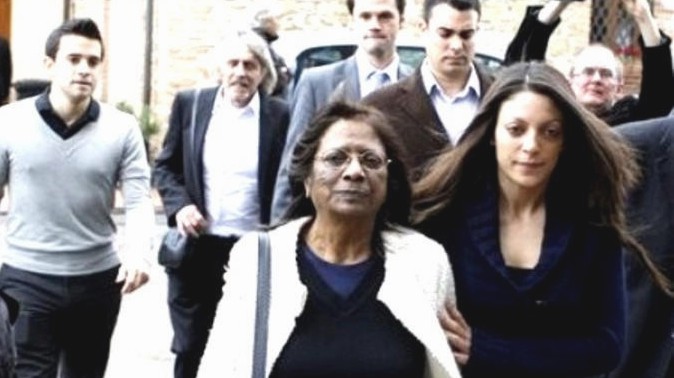
This was in 2009, Meredith’s family, not in court, may hear things came full circle today
Tweets from the court
New tweets from the court if any (we may have to wait for breaks) are being added under the various author’s names below. Numbering flows from Wednesday’s post.
Any breaking news
22. Reason for delay in the announcement is paperwork we believe, there were dozens of reasons for an overturn in the two written appeals, and they would have to be responded to one by one if appeal is denied. The Telegraph seems to be planning a live website feed though it may be from outside. .
21. Here is where Sollecito is headed if he makes it before any guilty verdict and the 2 police cars in his rear mirrors him stop him and take him in: 41°14’37.80"N 16°29’2.50"E Put that into Google Earth search and then descend to street view. Thats the gate for the compound, chez Sollecito is a couple of houses down on the left. Francesco Sollecito has addressed crowds of reporters there.
20. Video here of RS and his sister Vanessa leaving by side entrance, possibly for Bari. As Florence prosecutors are in court, this may be his way of ensuring he is not photographed being frogmarched out of there.
19. Knox undercut her own defence by stiffing Florence court. Could in new Florence trial face more years for criminal defamation. Moore & Burleigh & Fischer & other PR shills may face citations too, as their excesses outnumber those of Gumbel and Sforza already in court. Tweeting stalkers too. Communication Police looking now.
18. Italian ANSA report is calling RS lawyer Giulia Bongiorno’s address to the court “Bye Bye Amanda” as she says only questionable DNA relates RS to scene of crime. [Oh? Several footprints? Opposing knife wounds? Multi alibis? Computer? Cellphone?]
17. Media, please get it right: Amanda Knox was not “tried in absentia” at Florence “trial”. IT WAS HER OWN APPEAL and Italian lawyers argued with her for a week that she really needed to be there. Having abused so many in Italy, and put drug dealer in jail, was her no-show really such a surprise?
16. Strong-arming unethical Gogerty-Marriott PR firm closes down in Seattle with a final dishonest thump of the chest. Said to be freaked by potential legal liability. Maybe Knox herself should sue as they made her plight much worse.
15. So NYC Sollecito advisor John Q Kelly shows his face again. He was wildly wrong on the hard facts late 2009 and promptly disappeared.
Tweets from journalist Andrea Vogt
17. Heavy media & police presence at Italy’s high court this a.m. for final hearing in #amandaknox case. Sollecito’s defense at 9.
18. Raffaele Sollecito’s Italian and American lawyers Giulia Bongiorno & John Q Kelly just greeted in hall outside Aula Magna
19. Giulia Bongiorno on the lack of DNA from #amandaknox and sollecito in murder room: only a dragonfly leaves no trace.
20. Bongiorno casting doubt on forensic police dna interpretation. “Maybe, in science, does not exist. Either it is Raffaele ‘s dna or not.”
21. High court judges in #amandaknox case are going into deliberations now. They will alert all one hour before they announce decision.
22. Court can: 1) call appeal [outcome] inadmissable 2) accept it 3) reject it 4) annul convictions & back to appellate 5) annul convictions.
23. Members of Florence prosecutor’s office are at Rome court today for decision on #amandaknox / Sollecito appeal of their convictions.
24. #amandaknox convictions have been completely overturned. She is a free woman.
25. Both raffaelle Sollecito and #amandaknox convictions have been fully overturned. Cries of joy in courtroom from sollecito’s family
Tweets from main poster Kristeva
15. Follow @andreavogt as she has better phone reception than me. I apologize
16. Much larger crowd today attending the final hearing for #amandaknox & #RaffaeleSollecito
17. The general feeling among reporters is that #RaffeleSollecito might get a second appeal. no chance 4 #amandaknox
18. Several reporters interested in http://themurderofmeredithkercher.com and will call me to have more info in the next days
19. I was asked how the #MeredithKercher support website started and I gave the whole history
20. Spoke to Maresca to thank him and in return he thanked our volunteer work for http://themurderofmeredithkercher.com
21. Reporters were also interested in PR machine for #AmandaKnox and I referred them to http://truejustice.org
22. After Bongiorno, Maori will give his arguments and Judges with enter chambers to deliberate verdict
23. Timing of verdict for #amandaknox and #RaffeleSollecito unpredictable. May justice 4 #MeredithKercher prevail. My prayers for family
24. [6.15 am US east coast time] Maori finished. Judges have entered chambers to deliberate verdict.
25. No more appeals. Case over #amandaknox #RaffaeleSollecito acquitted for murder of #MeredithKercher #SHAME
26. I am shocked
Tweets from main poster Machiavelli
17. [no tweets yet]
Tweets from journalist Barbie Nadeau
4. High court now deliberating fate of #amandaknox and #RaffaeleSollecito in #MeredithKercher murder case.
Wednesday, March 25, 2015
Supreme Court Appeal By RS And AK Against Florence Court Rejection Of Their First Appeal
Posted by Our Main Posters
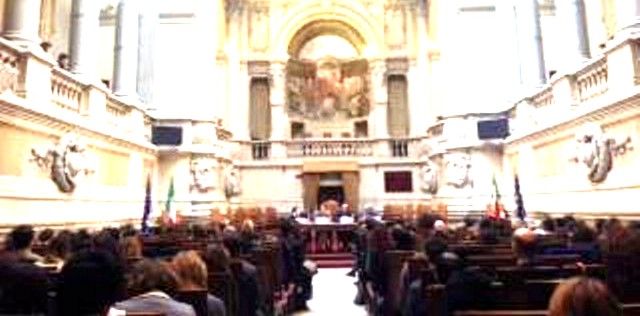
Above: stock image on another day of the Supreme Court’s Great Hall
Tweets from the court
New tweets from the court are all being added under the various author’s names below. This will continue Friday for sure.
Any breaking news
13. Court is over for the day and will resume on Friday.
12. La Nazione reports: “The judgment of the Supreme Court on the murder of Meredith Kercher will not arrive before Friday 27, the day when the judges will meet in closed session. This was announced by the President of the Fifth Criminal Chamber of the Supreme Court, Gennaro Marasca, during today’s hearing.”
11. We dont know the local telephone network capacity there. But many cellphone transponders can handle only 24 calls at a time. Demand for “outside lines” could number in the hundreds from the entire court. Maybe there’s an open WAN but we doubt.
10. Regardless of outcome Knox legal problems could go on for years. Since 2009 she has faced calunnia charges for lying on the stand. Possible sentence six years. Now Florence court has added calunnia charges for lying in her book, in Oggi, on her website, and on American TV. Perception going back to Ricciarelli is she is dangerous and hurts people, even if final murder verdict is not in.
9. Popper says of Dr Pinelli: “In his late 50s (a young man ref Cassazione average), a career both in Abruzzo region (Avezzano where he was born in 1957) and L’ Aquila, and then Naples in the Procura Generale; then promoted to Cassazione. Very much acquainted with murders and organised crime.”
8. Popper says of Dr Marasca: “Section President of Cassation [one of the few] and member of Consiglio Direttivo, a sort of Executive Board of the Supreme Court ... one of the most experienced magistrates in Italy, born in 1944. Since 1970 a magistrate.”
7. News service ANSA: “The head judge is Gennaro Marasca. The lead prosecutor is Mario Pinelli. After the prosecutor has spoken it will be the turn of Maresca (for the Kerchers). Then they’ll hear from Bongiorno and Maori, Ghirga and Dalla Vedova”.
6. New report with today’s date from Barbie Nadeau on the CNN Website. Seems CNN like most US media no longer solidly in Knox camp.
5. The Court has placed a ban on live tweeting from inside the courtroom, where mobile phone reception is poor anyway. Reports will come during the breaks.
4. Best guess at timing of decision is late PM US East Coast time. In 2013 it came the next day.
3. As with previous court outcomes, expect long-form analyses of outcome by Machiavelli etc within the next few days.
2. New York Times’s Elisabetta Povoledo provides a good overview of today’s context.
1. See our own scenario for today and coming weeks in the event the Florence verdict and sentences is confirmed.
Tweets from journalist Andrea Vogt
1. Raffaele Sollecito is here in court, speaking with his lawyer Giulia Bongiorno. #amandaknox lawyers and Patrick Lumumba also present.
2. Cannot tell how the court is leaning. Reviewer made hurtful and helpful comments to both sides. Still could go either way. #amandaknox
3. Court pres Gennaro Marasca calls break until 2:30. PG Mauro Pinelli has another hour of arguments. Arguments & ruling could be Friday
[break for lunch]
4. There is a sense among some observers that the Court is differentiating between positions of amanda knox and raffaelle Sollecito.
5. Maresca: I am representing the Kercher family in court for the 8th time. I hope this will be the last arguments I give on their behalf.
6. Maresca: It is time for the Kercher family to finally be able to remove this poor victim from the law courts.
7. Ghirga: “its not that we want to blame the poor black guy, its that you cannot rule out a single aggressor.”
8. Lawyer Luciano Ghirga: The scientific evidence favors #amandaknox (no trace of her in the murder room).
9. Carlo dalla Vedova has launched a blistering attack on the state of Italian justice system and the problem of “the neverending trial.”
10. Dalla Vedova for #amandaknox: How can we tolerate in Italy that trials can go on forever?
11. Hearing over for the day. Raffaelle Sollecito’s defense will continue Friday, march 27.
12. Ghirga: “its not that we want to blame the poor black guy, its that you cannot rule out a single aggressor.”
13. Lawyer Luciano Ghirga: The scientific evidence favors #amandaknox (no trace of her in the murder room).
14. Carlo dalla Vedova has launched a blistering attack on the state of Italian justice system and the problem of “the neverending trial.”
15. Dalla Vedova for #amandaknox: How can we tolerate in Italy that trials can go on forever?
16. Hearing over for the day. Raffaelle Sollecito’s defense will continue Friday, march 27.
Tweets from main poster Kristeva
1. I have arrived outside Section V. Sollecito, father and Greta. Poor [cellphone] reception.
2. Spoke to Avv. Maori & asked him who general prosecutor is and he doesn’t know yet. there are 2.
3. Andrea Vogt has just arrived and speaking to Avv. Ghirga
4. American British Journalists are all talking to Avv Dalla Vedova now.
[court session starts]
5. Relator Judge P. A. Bruno laughs once and while getting names wrong such as Hallowo instead of Halloween.
6. Prosecutor finds Rudy’s climbing up wall 4 numerous times “crazy”
7. Paolo Antonio Bruno knows the case extremely well without ever looking at his notes.
[court breaks for lunch]
8. Prosecutor has ended. He asked without remand 28.3 yrs #amandaknox and 24.9 for #raffaelesollecito
9. Bongiorno has asked to speak on Friday so most likely verdict will be then.
10. Pacelli now on civil case for Patrick Lumumba
11. Maresca has now concluded. Confirms all points made by Nencini, the general prosecutor and Galati
12. Maresca was brief and concise and said that after 8 years he hopes this is the last time he has to make same arguments
13. Maresca says that everything asked by #amandaknox and #RaffaeleSollecito has already been asked at Perugia and Florence trial.
14. Maresca makes a big point about pages re Conti & Vecchiotti and calls them on their lie.
Tweets from main poster Machiavelli
1. Reporting Judge at SC for the Meredith case is Antonio Paolo Bruno.
2. The Prosecutor General is Mario Pinelli. President Judge is Gennaro Marasca.
3. PG said the Florence sentence “respects the indications set by the Cassazione”
4. PG: says courts, based on findings “correctly established that the theft was staged”.
5. PG: court “pointed out correctly” that there was a staging “in order to side-track investigation”
6. PG: “3 people attacked the victim” and “there was no fight” unless you mean “attempts to defend herself by restrained victim”
7. PG: Florence decision not to repeat computer analysis on Sollecito’s laptop is “not censurable”
8. Sollecito reported nervous when PG observes computer data defence objections are irrelevant to alibi.
9. PG: Florence refusal to order anthropometric investigation on CCTV images is “adequately motivated”
10. Pinelli: phones removed because by “ringing in the home” may have caused early discovery of the crime.
11. Judge Bruno (like Zanetti) had said the trials had “not many certainties” beyond the girl’s death and one definitely convicted.
12. PG Pinelli said some minor charges have expired, thus Florence should re-assess penalties with slight reduction due time limitation laws.
13. Antonio Paolo Bruno is the Supreme Judge who was accused of conspiracy with Mafia by prosecutor DeMagistris in 2006.
14. Pinelli asked 3 months cut from both penalties (weapon carrying). But this cut may technically require intervention by Florence court.
15. Maresca says that everything asked by #amandaknox and #RaffaeleSollecito has already been asked at Perugia and Florence trial. Enough.
16. Maresca makes a big point about pages re Conti & Vecchiotti and calls them on their lie.
Tweets from journalist Barbie Nadeau
1. Judge confirms verdict will be Friday in #MeredithKercher case.
2. Prosecutor in #AmandaKnox case asks to trim 3 months off Knox’s 28 year 6 month sentence.
3. Reason for shaving 3 months off sentence in #AmandaKnox case is statute of limitations in theft charge.
Friday, August 15, 2014
Legal Timeline Of The Main Case, On Which The Next Ruling By Supreme Court Could Be Final
Posted by catnip
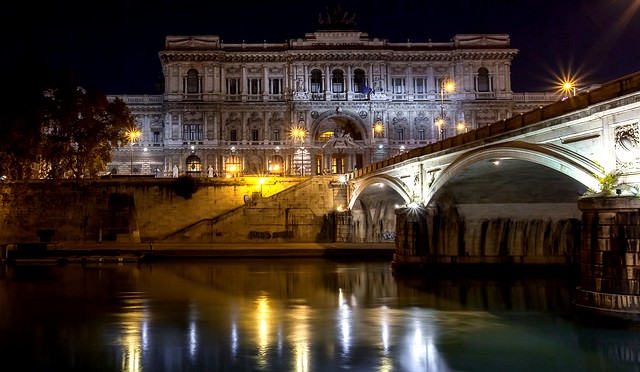
Cassazione (Supreme Court of Italy) seen from the east across the Tiber River
Todays Status
The Supreme Court is due to rule, possibly in the autumn, on what might be the final appeal by Sollecito and Knox on grounds which have not been published. Main steps prior to this:
November 2007
Meredith Kercher is found violently killed in her home while studying abroad in Italy. Her housemate, Amanda Knox, and Amanda’s friend Raffaele Sollecito, as well as Amanda’s boss, Patrick Lumumba, are arrested. A fourth person, Rudy Guede, is tracked down and also arrested. Patrick Lumumba’s alibi is confirmed and he is released.
December 2007, January 2008
Due process hearings authorise the continuation of preventative custody for the suspects, on the grounds of flight risk and possibility of tampering with the evidence.
October 2008
Preliminary Hearing Court, Perugia, Micheli presiding ““ after investigations have completed, the committal hearing finds there is a case to answer and remands Amanda Knox and Raffaele Sollecito to stand trial on the charges of :
- (A) aggravated murder in company of Meredith Kercher
(B) illegal transport of a knife from Raffaele Sollecito’s apartment
(C) aggravated sexual assault in company of Meredith Kercher (later folded into charge (A), on the grounds of being part of the same criminal event)
(D) illegal profiting by possession, to wit: of a sum of money approx. €300 and of credit cards belonging to the victim, and her mobile phones
(E) simulation of a crime, to wit: staging a break-in in Filomena Romanelli’s room
(F) Amanda Knox, in addition, calunnia, for falsely claiming, knowing him to be innocent, Diya Lumumba also called “Patrick”, of being the author of the murder
Rudy Guede is tried summarily “on the papers”, as he has requested the expedited trial procedure (“fast-track” trial) and is found guilty of charges (A) and (C), and not guilty of the theft, charge (D), and sentenced to life, automatically discounted to 30 years for choosing the expedited trial procedure.
December 2009
On appeal to the Court of Appeals, Perugia (4/2009, on 22 December 2009), his sentence is reduced to 24 years, automatically discounted to 16 years, the aggravating factors of the charges not being found by the court. His final appeal, to the Supreme Court of Cassation, First Criminal Section, is rejected (7195/11, hearing of 16 December 2010, reasons handed down 24 February 2011).
December 2009
Court of Assizes, Perugia, presided over by Massei ““ finds Amanda and Raffaele guilty of all charges (except the theft of the money and credit cards) but without the aggravating factors applying, and sentences them, with mitigating factors included, to 26 years for Amanda, and 25 years for Raffaele (the extra year for Amanda being for the calunnia).
October 2011
Court of Appeals of the Court of Assizes, Perugia, presided over by Hellmann (after a last-minute replacement) ““ trial convictions quashed, except for the calunnia charge against Amanda (charge (F)), where sentence was increased to time served (3 years); both prisoners released (4/2011, decision 3 October 2011, reasons handed down 5 December 2011).
March 2013
The Supreme Court of Cassation (25/3/2013) found the acquittals on charges A&C, B, D, and E to be unsafe, and annulled that part of the decision, remanding the matter to the Florentine jurisdiction, as per the usual cascade rules, for a fresh determination, and rejected Amanda Knox’s appeal on the charge (F) conviction and sentence.
January 2014
Court of Appeals, Second Chamber, Florence, presided over by Nencini ““ trial convictions on the non-calunnia charges upheld, therefore sentence increased to 28 years and 6 months for Amanda (11/13, decision 30 January 2014, reasons handed down 29 April 2014). All convicted parties to pay the relevant compensation to the various injured parties. Appeals to the Supreme Court of Cassation have been lodged.
Associated Timelines
See the posts here and here on the timing of events arrived at by the trial judges.
Tuesday, May 06, 2014
Judge Nencini Issues Harsh Warning To Tell The Truth - So Amanda Knox Does The Precise Opposite
Posted by Our Main Posters
1. Substance Of The Nencini Explanatory Report
The Florence Court of Appeals released the Nencini Motivations Report in Florence one week ago today.
This report explains the rejection of Knox’s and Sollecito’s own first appeal against the Massei trial outcome of 2009. Four years were lost because the Hellmann court, which heard the first iteration of that appeal was bent as Cassation, the competent judge displaced, and now Judge Nencini have all concluded.
The Hellmann outcome of 2011 was mostly annulled, as in “ceased to exist”. The main findings and verdict have zero legal standing, and zero relevance to today’s process though (see below) Knox and Sollecito repeatedly try to ride that dead horse again.
Cassation confirmed Knox’s three-year prison sentence for framing Patrick (for which she has served the time). And Cassation referred the methods and recommendations of the Conti & Vecchiotti consultancy, which Cassation had hammered on legal grounds, to the Florence appeal court for the substance to be reviewed.
Our evidence and law experts here and in Italy have been looking at Judge Nencini’s 347 page report and find it hard-hitting and unequivocally blunt.
It will be extremely hard to appeal against within the very narrow limits Cassation allows. It removes all of Judge Massei’s ambiguities about motives, it reaffirms the witness statements of Curatolo and Quintavalle, and it judicially affirms the validity of the DNA and other forensic evidence against Knox and Sollecito.
There is overwhelming proof of the presence of all three perps, Knox, Sollecito and Guede, in the cottage that night. Guede is considered to have been brought inside by Knox, who had the only key, and he could not possibly have broken in through Filomena Romanelli’s window in the manner asserted by their defense.
Especially troubling for the defense, the report hints at an illegal suborning of the independent forensic experts appointed by the Hellmann court, and it also hints that the two “supergrass” witnesses, the prisoners Aviello and Alessi, may have been illegally tampered with by Sollecito’s lawyer Giulia Bongiorno, as first claimed 30 months ago.
The report warns that criminal slander of justice officials and other contempts of court will be heavily leaned on.
So the report demolishes the last remnants of Judge Claudio Hellmann’s now annulled acquittal, and substitutes for its fatally flawed reasoning a tightly crafted report that confirms the convictions of Knox and Sollecito.
It confirms that they acted in concert with Guede as Cassation itself long ago concluded had to be the case, and it appears to close any possible argument against the verdict that will carry weight at the Supreme Court.
2. Amanda Knox’s Press-Release Statement In Response
Knox issued a seven paragraph statement later the same day. Maybe not the smartest bit of work.
It is riddled with factual inaccuracies and innuendo, is typically arrogant and condescending in tone, includes the trademark racial innuendos about Italians and the black guy in the case, and shows no signs in its compiling of competent legal help.
Here below we show the various ways in which Knox flouts Judge Nencini’s warning and attempts to mislead. None of what Knox stated was the truth.
Claim: The Hellmann Court Found Knox “Innocent”
I have stated from the beginning of this long ordeal that I am innocent of the accusations against me. I was found innocent by the only court in Italy that retained independent forensic experts to review my case. I want to state again today what I have said throughout this process: I am innocent of the accusation against me, and the recent motivation document does not ““ and cannot ““ change the fact of my innocence.
First even if she was provisionally released following the now-annulled appeal, Amanda Knox was never, repeat never, found innocent. Only Cassation can make that final ruling, and they strongly found against the lower court that had jumped the tracks midway-through.
Even Judge Hellman himself said after his verdict that ‘the truth might be otherwise’ and suggested any reasonable doubt as to guilt has not been categorically and legally dismissed. He seemed to divine that he had failed in his task of bending the outcome in a way that would stay bent.
Second the court that Knox thinks found her innocent no longer exists as a legal fact. It seems to endemically escape Knox that the Hellmann outcome was annulled. Annulled. As in: wiped off the books. It is surprising that even Curt Knox and Ted Simon and David Marriott, while admittedly themselves no masters of Italian law, cannot help Knox to grasp that simple fact. It weakens her to keep clinging to a myth.
One reason it was annulled (and the reasons were overwhelming, one of Italy’s most decisive annullments ever) was that both Cassation and Dr Nencini had good reason to suspect the Hellmann court had been corrupted and had deliberately departed from the evidence and the law. Knox needs to ask herself why the highly qualified Judge Chiari was pushed aside (and immediately resigned in anger) in favor of a wrongly-qualified business judge (who is now ignominiously retired).
Third, it needs to be grasped by Knox that the Conti/Vecchiotti consultancy, far from being legally right and acting independently (and scientifically), was suggested as illegal by Perugia’s chief prosecutor Dr Galati, as appeal judges are forbidden from appointing consultants at that stage. While Cassation passed in ruling on that one, the consultancy outcome was criticised as illogical and legally unsound by both Cassation and Judge Nencini, as biased, full of baseless innuendo about contamination, and possibly tampered with by an American academic hired by the defense.
Conclusion: none of what Knox stated was the truth.
Claim: Only Rudy Guede’s DNA Was Found
The recent motivation document does not ““ and cannot ““ change the forensic evidence: experts agreed that my DNA was not found anywhere in Meredith’s room, while the DNA of the actual murderer, Rudy Guede, was found throughout that room and on Meredith’s body. This forensic evidence directly refutes the multiple-assailant theory found in the new motivation document. This theory is not supported by any reliable forensic evidence.
The forensic evidence is not just the DNA on the knife or in the room. It also includes the extensive traces deposited by Knox in the rest of the crime scene (bathroom, corridor and Filomena’s bedroom), and it also includes all of the autopsy.
Meredith’s room itself was not comprehensively tested for DNA. The room was dusted only for fingerprints, as the investigators had to make a call on prints or DNA.
Guede’s DNA was not found “throughout that room” or all over Meredith’s body. Guede’s DNA was found only in one instance on Meredith’s body, on a part of Meredith’s bra, mixed with Meredith’s blood on a sweatshirt cuff and the purse, and on toilet paper in a bathroom.
Knox’s DNA was found mixed with the blood of Meredith in multiple places, the only known source for which was the pool of blood in Meredith’s bedroom: multiple prints of Knox’s bare right foot in the hallway and in Knox’ bedroom, and at least five instances of mixed samples containing the DNA of both Meredith and Knox, including in the north bathroom and Filomena’s room, places where Guede did not go.
The court ruled that the blood and mixed DNA evidence found throughout the crime scene places her and Sollecito there at the time of the murder at the same time as Rudy Guede.
Though not DNA, there was one bloody shoe print in Meredith’s bedroom estimated to be Euro size 36-38, compatible with Knox size 37 and with no one else known of who could have left it there.
No fingerprints of anyone were found in the room, just a palmprint of Rudy Guede. Fingerprints were not found even on Knox’s own lamp, which she only confirmed grudgingly at trial was her own, and not found even in Knox’s own bedroom. Overwhelming sign of a cleanup? The courts all believed so.
Conclusion: none of what Knox stated was the truth.
Claim: The Knife As Murder Weapon Was Disproved
The forensic evidence also directly refutes the theory that the kitchen knife was the murder weapon: the court-appointed independent experts confirmed that neither Meredith’s blood nor her DNA was on the alleged murder weapon, which experts also agreed did not match the stab wounds or the bloody imprint of a knife on her pillow.
Judge Nencini’s finding is that two knives HAD to have been involved from both side of Meredith’s throat and the final blow was by a large knife the same size as the one in evidence.
Regarding the large knife, Knox rehashes the same arguments her defense made to no avail before the original trial court that found her guilty. We posted explaining the solid proof here and here.
The only DNA tests that matter with regard to the big knife are (1) the sound finding by Dr Stefanoni that Meredith’s DNA was on the blade - Knox is wrong, the independent experts did not refute that; (2) the sound findings by Dr Stefanoni and the Carabinieri lab that Knox’s DNA was on both the blade and the handle of the knife. None were overturned; contamination was ruled out; and the defense was left without a shot.
The Hellmann-appointed experts confirmed that the genetic profile found on the knife blade was the genetic profile of Meredith Kercher. The TMB test did not confirm if it was blood, but defense experts were forced to concede that TMB erroneously fails to confirm that blood is present about half the times in assessing minute quantities.
The Hellmann-appointed experts tried to explain away the genetic profile as being the result of contamination, but were never able to identify any scenario by which a knife that had supposedly never left Sollecto’s kitchen contained biological material yielding a clear genetic profile of Meredith Kercher.
Accordingly the Appeals court has ruled the kitchen knife is in fact the one that was wielded by her to strike a final blow, and at the same time there was a second knife in the room used by Sollecito to torture Meredith.
London DNA expert Dr David Balding certified Raf’s DNA as being on the bra clasp. This proves by itself that Sollecito was there. Knox belatedly claimed she stayed at the Via Garibaldi apartment with Sollecito all evening and now and then Sollecito belatedly backs her up. But how could that be if the court has positives of his footprint on the bathroom rug and on the bra, showing he was over at Meredith’s cottage that night? Proof of him present equals proof of her.
The Hellmann-appointed experts were not charged with analyzing the stab wounds, or whether the imprint on a sheet was of a knife or of something else and the result of the fabric being folded - nor was this within their field of expertise. Defense experts testifying on these issues were in conflict.
Conclusion: none of what Knox stated was the truth.
Claim: The Circumstantial Evidence Is “Unreliable”
In fact, in the prior proceeding in which I was found innocent, the court specifically concluded that the forensic evidence did not support my alleged participation in the crime and further found that the circumstantial evidence was both unreliable and contrary to a conclusion of guilt.
The recent motivation document does not ““ and cannot ““ change the fact that the forensic evidence still does not support my participation and the circumstantial evidence still remains unreliable and contrary to the conclusion of guilt.
Knox appeals to Hellmann’s ruling on the circumstantial evidence being unsound. But the Supreme Court, in annulling Hellmann, explained why it found his arguments illogical, and reminded the court of the standards by which circumstantial evidence must form a coherent whole. Judge Nencini in our opinion amply meets those standards in an elegantly argued report which will be hard to defeat at Rome’s Supreme Court.
Knox herself has proved the “unreliable” one, proven over and over again to be a liar who attests to her own bad memory in written statements, who talks of “dreams her mind made up”, who repeatedly goes vague.
We cannot rely on Knox’s recall of phoning mom, the timing of which moves and sometimes disappears. Knox claims she can’t remember where she was that night, she told a whopper of a lie on her boss, she can’t remember if the door to Filomena’s room was open or closed, she can’t remember her own lamp, she claims she rarely looks at a clock. On and on.
The strongest example of circumstantial evidence Knox can’t shake is the five spots of her DNA mixed with Meredith’s blood. Maybe 2 or 3 spots could be put down to unlucky chance, but five really removes reasonable doubt.
Conclusion: none of what Knox stated was the truth.
Claim: No “Legitimate” Motive Is Identified
And the recent motivation document does not ““ and cannot ““ identify any legitimate motive for my alleged involvement in this terrible crime. No fewer than three motives have been previously advanced by the prosecution and by the courts. Each of these theories was as unsupported as the purported motive found in the new motivation document, and each of these alleged motives was subsequently abandoned by the prosecution or the courts. Like the prior “motives”, the latest “motive” in the new motivation document is not supported by any credible evidence or logic. There is simply no basis in the record or otherwise for this latest theory.
“Proof” of motive is not required in any legal system in the world. The serial misleader Ted Simon should at least admit to that. The motives advanced were not withdrawn or abandoned by successive judges; they were fine-tuned chronologically only within very narrow limits. The sex hazing that went too far was weighted downward and pushed back, and a battle over theft of money was weighted upward and pushed forward.
The court found very compelling evidence that Knox committed the murder and led the pack. It postulates that Meredith and Amanda were incompatible with each other, and that Knox, Sollecito and Guede, high on drugs, first assaulted Meredith, restrained and abused her, and then murdered her with two knives.
Knox was known to be in serious rejection by those she encountered in Perugia for her sharp-elbowed brashness - growing rejection by her flatmates, her employer and the bar customers, and just about everyone she encountered except initially for Sollecito. But soon even he was being given a hard time and has semi-rejected Knox in return ever since. The first words of his 8 November 2007 statement to Judge Matteini were “I wish to not see Amanda ever again.”
And money was a huge looming problem which could have had her back in Seattle in weeks. Knox was known to want to head for China, and was known locally to have an expensive drug habit which had cut her savings in half. She really needed to hang on to that job at Patrick’s bar, especially as she had no work permit.
Sollecito’s bank balance was minimally topped up by his father each month. Francesco seemed to realise cocaine is an expensive habit and didnt want to see his son off down that slippery slope. So with Knox’s own habit, her remaining savings would have run out in weeks. How then to explain to Curt Knox that she really needed a whole lot more? He would have given her a very hard time before any more money flowed.
Conclusion: none of what Knox stated was the truth.
Claim: The Supreme Court Will Allow Another Full Appeal
I will now focus on pursuing an appeal before the Italian supreme court. I remain hopeful that the Italian courts will once again recognise my innocence. I want to thank once again, from the bottom of my heart, all of those””family, friends, and strangers””who have supported me and believe in my innocence.
Cassation wont “once again” recognise innocence. Knox should be encouraged to get real. So should her dummy followers - all her immediate circle know she was involved. There are no obvious grounds for Cassation to second-guess Judge Nencini, a very senior and very respected judge, considering the thoroughness of the Nencini Report. The disjointed series of statements on her blog arguing to the contrary look like the opinions of her friends and fans, not legal minds, and it is time she realizes they have feet of sand and no power to help.
Conclusion: none of what Knox stated was the truth.
Three lawyers and five others supplied the rebuttals for Amanda Knox’s false claims here and elsewhere, such as Knox’s email to Judge Nencini and her interviews on TV. Posts on those follow soon. Below: the careful way in which Italian media explain what Judge Nencini released.
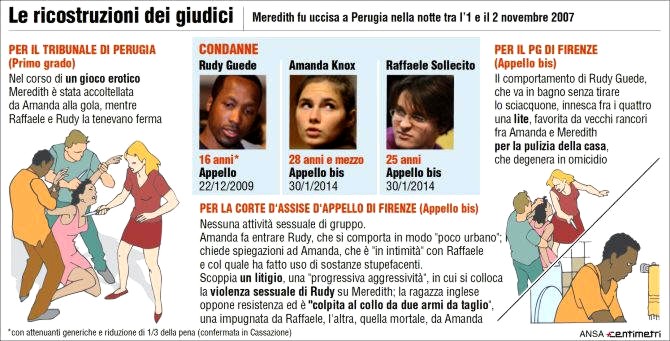
Wednesday, March 12, 2014
Council Of Magistrates In Effect Shrugs At Judge Nencini Answering Loaded Question Of A Reporter
Posted by Peter Quennell
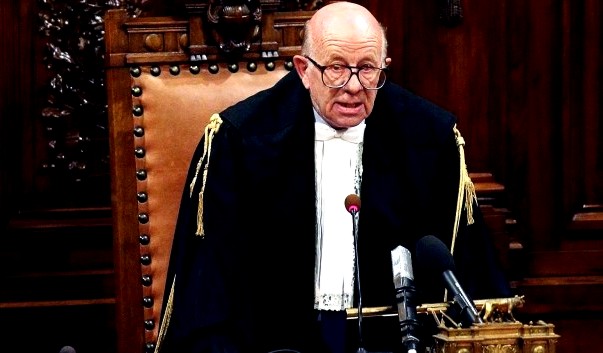
[Cassation judge Antonio Esposito who just faced down a similar complaint to the CSM]
The only ones pushing for the CSM committee hearing today and maybe another one at Cassation were Giulia Bongiorno and a few political friends.
Everybody knows she has once again lost very big and once again is snakily trying to demonize the court rather than gracefully moving on.
The final vote of the full CSM will be announced next week, but it seems a foregone conclusion. The Council will shrug and move on.
Judge Nencini explained himself well for one hour (with his wife, also a judge, present) and probably no magistrate on the Council would have acted so differently, given that the michievous reporter had been asking if the killing of Meredith happened simply because the three had nothing better to do.
Maybe some of the magistrates were thinking “So Bongiorno didnt put Sollecito on the stand? Hmmm, she KNOWS of his guilt only too well”. There is no mood among them to to see the defiant Sollecito who has slimed the system and slimed a much admired judge use a loophole to get himself off.
Jools explained the context of today’s hearing several weeks ago and translated one of the media reports for us today.
Knox, Sollecito judge unlikely to be disciplined by CSM
Inquiry over post-conviction press statements
Rome, March 11 - The Italian judiciary’s self-governing body, the CSM, is likely to drop an inquiry into a Florence judge who broke Italian legal convention by giving press interviews after convicting Amanda Knox and her ex-boyfriend Raffaele Sollecito for the 2007 murder of British student Meredith Kercher in February, judicial sources said Tuesday.
In Italy, judges usually only talk about their verdicts via written explanations published at least a month after they are handed down. But Alessandro Nencini, the head of the panel that sentenced Sollecito to 25 years and American citizen Knox to 28 and a half years at the repeat of the appeals-level trial, gave three interviews to different newspapers that were published February 1.
As a result, Nencini was accused of being biased. One of the most controversial aspects is that in one of the interviews, Nencini seemed to suggest that the fact Sollecito had not allowed himself to be cross-examined had damaged his chances of getting off.
The judge told a CSM commission Wednesday that he did not give interviews, but rather spoke in passing to reporters at the courthouse. He also denied saying the murder was the result of ‘‘kid’s play’’ gone wrong, or expressing an opinion on Sollecito’s defense strategy.
The hearing transcript will be available within a week, when the CSM commission will make its opinion official. The consensus seems to be that Nencini’s statements to the press may have been ill-timed, but not enough to justify a transfer, judicial sources said. Nencini is still not out of the woods, pending the result of justice ministry and Cassation Court inquiries that could lead to disciplinary action against him.
Friday, February 28, 2014
What We Might Read Into Sollecito Lawyer Giulia Bongiornos Final Arguments To The Appeal Judges
Posted by Machiavelli
Under the table & over the top
The picture of a serene-looking Giulia Bongiorno waving a couple of knives in court on 9 January may be visual inspiration to this reflection about what we can understand from the structure and content of her closing arguments.
A very peculiar feature of her arguments was the desperate opening, suggesting to put the investigation ““ and the whole justice proceedings ““ on trial.
The introductive topic of her speech is a quote from a book by Alessandro Satta, a narrative description of the riotous irruption of the mob inside the Revolutionary Tribunal hearing room on Sep. 2. 1792, the defendants are the some of the King’s Swiss guards.
The passage by Satta describes the “horrendous” vision of a hord of sanculots slowly gathering outside the court, Bongiorno compares that to the angry mob in Perugia after the first appeal verdict.
But if you read the same text by Satta a little further, a few lines beyond the snippet Bongiorno was reading, the narration goes on describing how sanculots manage to enter the courtroom, in a force of hundreds ready to lynch the defendants, but they are suddenly halted by an authoritative order of the Judge, and they unexpectedly obey.
Just after that, Satta drops in an explanatory quote from the book Le Tribunal révolutionnaire (by historian Lenotre) saying: “the people understood that these highly educated individuals in black robes would have gone on with the action started by the hords, and they would accomplish it more perfectly”.
It seems like Bongiorno opened her speech with an implicit depiction of the judges and magistrates of Perugia as kind of Jacobin extremists whose task is to “legitimize” the vindictive fury of a pitchforks mob.
The quote she read did not include Satta’s conclusive lines, so that the consequent thought about the judges’ role remained unexpressed and in the background.
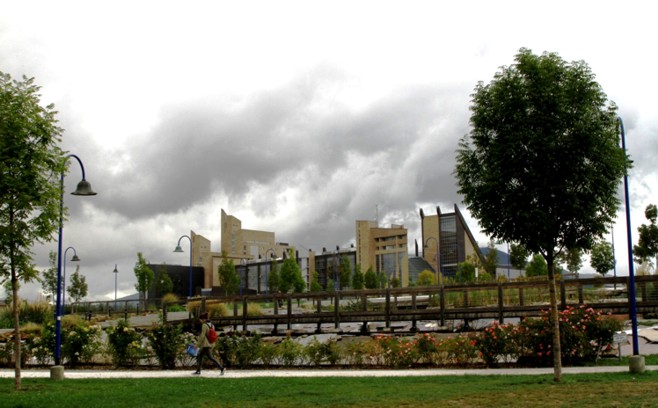
(Photo by Machiavelli_Aki)
A side note about Bongiorno’s arguments: in fact I had the feeling that allusion to implicit subtexts was something that belonged to her speech as a method or a style, it marked the whole of her arguments. You may recall Wittgenstein’s dictum “This work consists of two part, what is written in it, and what is not written in it. The latter is the most important part.”
Such a motto might be apt to address the major feature of Bongiorno’s defensive argument, insofar as she conveyed that something that “couldn’t be talked about openly” was there and that was probably a main argument.
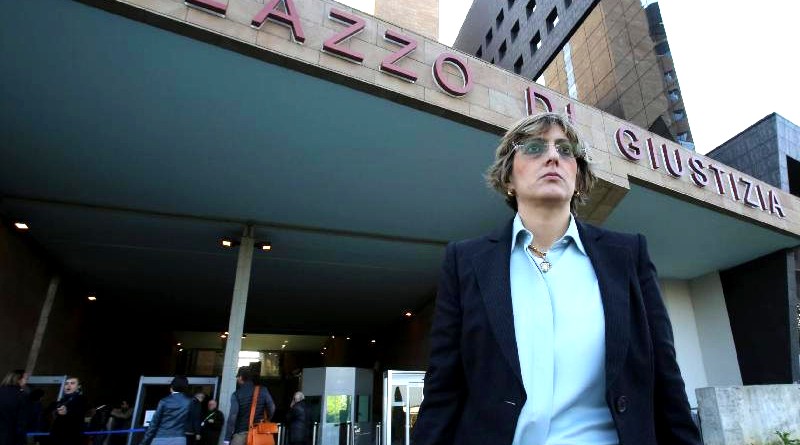
(photo by Ansa)
At first, as I said, she went through a brief emotional recollection of her moments while in Perugia surrounded by a raging mob, and then she unfolded the rest of her introductive section.
The purpose of this bit of revolutionary narrative first juxtaposing the Perugian citizens to Sanculots and the judges to Jacobins, and then, immediately following, a series of accessory arguments all encompassed by an introductive function, all this was clearly intended to set a framework thesis meant to work as a basis for the structure of the whole defensive arguments.
It is in fact a peculiar structure, apparently entirely resting upon one, single elaborate premise.
The thesis she places at the foundation of the entire defensive argumentation is the following: the trial as a whole, as much as its outcome, had been somehow determined and “tainted” from the beginning by events which occurred within a very short framework of time, in the very early days of the investigation, the weeks around the time of the suspects’ arrests.
Bongiorno suggested that only this “short period” ““ the early days of November 2007 - is what matters and the only topic worth of a defence analysis; since this was the time frame within which - according to Bongiorno - everything was decided, this was the time when some “errors” in the investigation occurred, before the point when a veil of prejudice and hatred fell upon people’s hearts and minds like kind of black curtain, preventing from that moment on any fair or rational judgement.
Aggressive Digressions
After the quoting of Satta’s speech, she develops her introduction for a while, branching out into some political-sociological speculations (such as that authorities chose the crime scenario that was most reassuring for the population) as well as some political-anthropological consideration (like the theory that free spirited women are seen as suspicious as a consequence of women empowerment movements).
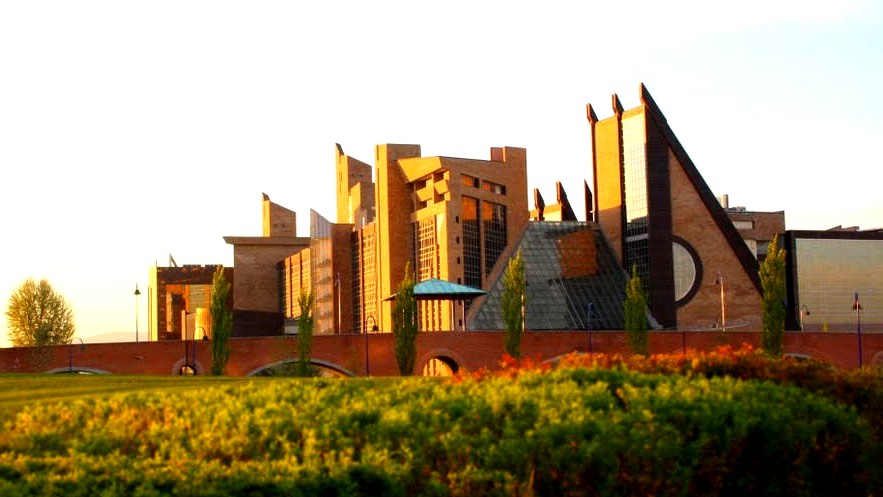
(Palace of Justice of Florence ““ photo by FrederickStudio)
A speech opening as did Bongiorno’s, that is, relying on a set of over-the-top considerations, and apparently so much depending upon one extreme premise, unavoidably conveys a perception of weakness, which is at risk to be transferred to the rest of the argumentation.
Thus, it would be a logical question to ask ourselves: why did Bongiorno chose such a setting and introduction, with several risky, over-shooting arguments?
A perception that the argument was unconvincing was palpable among the public as she was unfolding her theories about Perugian police opting for “political” scenarios and about sexy and free women seen as suspicious because of the women’s political movement.
Scepticism emerged even more openly when she described a scene with Amanda Knox releasing her false accusations while speaking under the hypnotic influence of interpreter Anna Donnino - whom she called “psychic” ““ which triggered some stifled laughs among the public.
Then her long introduction dealt with the unfolding of a rhetorical structure set around the concept of “half”.
I use the word ” rhetoric” in a most technical, non-derogatory sense, to mean the setting of a clear order and concepts designed to be easily remembered, anchored to multiple implicit suggestions, so as to remain impressed in the mind of listeners what is distinctive of the style of Giulia Bongiorno.
Introducing to “˜Halves’
In the previous trial instances she didn’t miss the opportunity to borrow characters such as Jessica Rabbit, Amelie and the Venus in a Fur. I thought she would mention at least a few characters of Disney or the Harry Potter saga this time too, and I was not disappointed as she met expectations on this matter (she did mention Harry Potter, the Eskimo kiss “˜Unca-Nunca’, the Bunga Bunga, the Aladdin Lamp and 9½ Weeks).
She entered the topical part of the introductive section saying “˜basta’ to always focusing on Amanda’s personality alone, while considering Raffaele just Knox’s other “half”, he is not half a character, he should not be seen as reflexion of Knox.
The curse of being “half” chases him also, meaning there are only “half pieces of evidence” against him. And this is the rhetoric structure envigorating the arguments after the introduction, the concept of “half” .
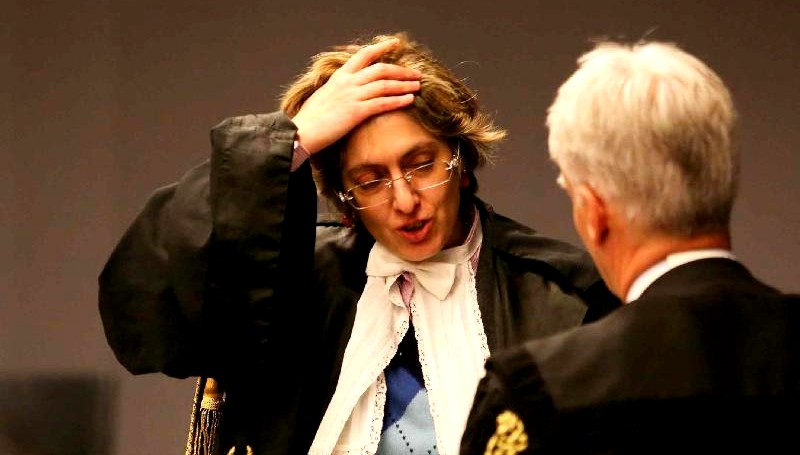
Only half pieces of evidence, almost a half admission, or the clear suggestion that there is maybe one “other half” of something (of culprits?) somewhere else, something not to be said, something that is not here.
The concept of “half” recurs and somehow pervades her defence, we should say something more about later on because she picked it up also in the subsequent hours of speech.
Some videos from the Florence trial available may still be available at the Sky site.
Primordial Fossils
Only after recollecting all these things in the “˜aggressive digressions’ over the introductive part, she goes on with a ponderous section which is the main part of her argumentation.
It’s a topic directly stemming from the introductive themes and premises, in the sense that this main part focuses on and blows up events of the first four days of investigation. It zeroes on few small details of the investigation history, the previous introductive part functionally working to justify the choice and to limit the argumentation to these topics.
Something the listener would notice from this first and main part of the arguments, as everyone well understands, is that these arguments are arranged in a peculiar type of architecture. A choice that makes crystal clear the actual state of the defence’s options.
The defence strategy is to focus attention on the supposed flaws in evidence collection at the beginning of the investigation, and not on the evidence set itself.
Bongiorno’s arguments do not map out the evidence set array. They do not devolve an effort of analysis in proportion to the actual weight of the of pieces of evidence.
The bulk of her speech in fact can be summarized as a criticism of some historical happenings ““ what she sees as such ““ which allegedly occurred within a very small time frame. She devoted hours to attacking the beginning of the investigation, early errors such as that the shoe print that had been wrongly attributed to Sollecito on a first assessment.
It appears this attack against the early procedures of the investigation was really considered to be the most effective weapon the defence had left.
The “˜topics’ Bongiorno addressed in this attack as “˜main points’ of evidence against Sollecito, are only three: the wrongly attribute shoeprint, Sollecito’s side-tracking the investigation, and “˜the knife’ (a topic which gets picked up again later, with a long discussion focused on the blade length).
In the same “˜knife’ topic she included DNA discussion, in a connected digression she dealt with the bra claps, called all the scientific evidence collection “˜the mother of mistakes’ and offered again the known criticism of Stefanoni’s alleged “suspect-centred”.
Later in her speech, she dealt with the other evidence topics, parroted the “˜principles’ expressed in the Conti & Vecchiotti report, offered the known arguments about the bathmat print, etc.
But the bulk of her defence hinged around those “˜mistakes’ in the early investigation phase, this was the actual core of her argumentation, while the other pieces of evidence were dealt with summarily, I had the impression they were almost treated as accessories.
It was clear above all that the defence was not battling the structure of the evidence actually existing today, they were battling a minuscule part of it, or better they were battling something else, something which is not directly the evidence, but rather some historical foundations of the accusation building.
Basically what Bongiorno conveyed is, the fighting terrain was the “˜investigators’ errors’, their “˜excesses’. That is, they were not actively contending Raffaele’s innocence any more.
The implicit content was rather obvious to the listener: a direct claim of Sollecito’s innocence had been already abandoned, that territory was left beyond the lines and the defensive front had been drawn back.
The topic now was not innocence, but rather how the accusation had been unfair and excessive.
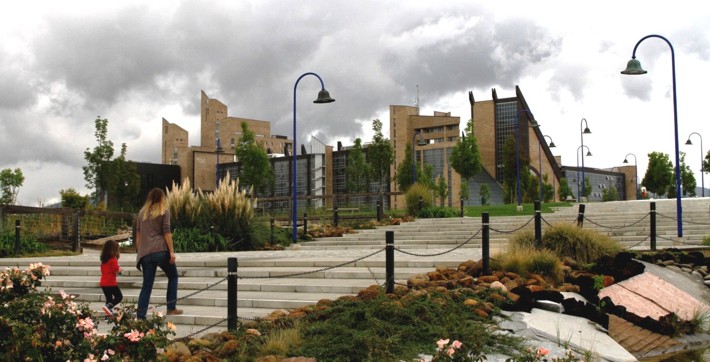
At her opening, the quote of Satta was a device to draw attention to the events at the “origin”, so as to prepare listeners for the fact that defence arguments will be focused on what happened during the moments before the “black curtain” came down.
Hence the a long introduction starting from an image of the fury of a mob of sanculots, a narrative on this theme: people were willing to convict the defendants immediately and judges were legitimizing people’s violence.
She oriented the discussion towards the topic of early prejudice and excesses, so to justify the fact that she will talk about the early phases rather than the evidence set, and then she introduced the leit-motiv of the “half”.
This means, rather than disputing the pieces of evidence, Bongiorno wanted to set a “trial of the investigation”, she zeroed on just a few details actually not having much relevance in the actual evidence set.
She talked at length about elements that are kind of fossils ““ like when she went on discussing about the number of circles in the sole of Guede’s shoeprint ““ putting the alleged “errors” in the course of the investigation on trial, and her speech at times sounded as if it was a lecture about dinosaurs, recalling curious things now extinct.
The explicit function of her introduction was to justify her setting aside the evidence set, downplaying it by framing it into a historical moment, maintaining that it was collected and interpreted when investigators were already beyond the “black curtain” of bias, therefore tainted by prejudice, while judges were like sycophants before an angry mob.
The purpose behind the Black Curtain
The implicit, most important function of the introduction was accomplished via the concept of “half” and all the subliminal suggestions attached.
We should ask ourselves: is it reasonable to believe Bongiorno was so naïve to expect that the court may accept a theory about a dismissal of evidence in limine?
The answer is no. Bongiorno knew perfectly well that her preliminary criticism of the investigation would not lead to a dismissal of the evidence.
Bongiorno also knew that the series of preliminary arguments she would offer would be considered ineffective by judges. Such as that the knife DNA should be seen as unreliable preliminarily, that Stefanoni’s work lacked “transparency”, that Vecchiotti and Conti’s “method” should be taken at face value (Bongiorno knows C&V’s intellectual honesty was called manifestly questionable by the Supreme Court ), that this and that allele in the bra clasp DNA should not be considered because, etc.
She also knows that this court will not allow pieces of evidence to be considered separately from each other in a parcelled out way, and that imperfection of single pieces themselves do not work as a logical argument. Even less could she dismiss the evidence based on political and anthropological theories.
From the fact that she was setting afoot on a trial of the investigation instead of battling the evidence, the rational listener infers that she is well aware of the weakness of her position, since it implies that the evidence set as the battleground would be indefensible. She needs to search for another terrain of attack, a different structure, as the only possible move.
But there is also another implication. She does need to engage and draw attention to areas where she could “win” something, but this also means that her intent was to “soften” the accusation, to work it out at the flanks rather than face it frontally; to reduce the size of some fundamentals, the “excess” of the accusation.
In other words, to shorten the sentence. And if possible, to separate Sollecito’s position from that of Amanda Knox, albeit within the boundaries of her client’s plea.
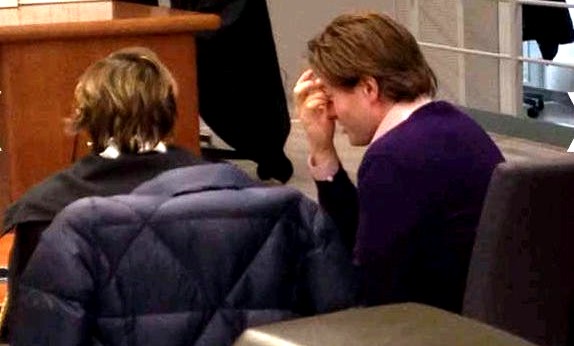
Her strategy of attack had a reason, that was to try to soften the accusatory attitude against Sollecito. Besides being risky (may sound extremely unconvincing) the strategy was also loaded with implicit meanings.
What was most stunning to me ““ as it was a recurrent topic through her whole speech ““ was the concept of “half”. She picked up this introductive theme several times, such as while speaking about the medical findings explaining that only “half” the length of the blade would be used, if a knife so large as Sollecito’s kitchen knife was used, saying that, in this event, this would mean the perpetrator did not intend to kill and killing was the effect of “mistake”, an involuntary movement.
The importance of the length of the big blade and its “half” was emphasized by a waving of knifes, in a quite impressive theatrical performance: “Either the big wound was made by a smaller knife” that was held by “someone else” or the knife was “plunged only by half” showing there was no intent to kill.
All this is to be coupled with the fact that, as said above, she devoted a main portion of her 6-hour speech to discussing things that are fossils, elements not existing any more.
She dealt later with other pieces of evidence too, though in a way that seemed somehow marginal, and she did not deal with some of them at all - the inconsistencies in Knox’s account, for example, were left completely out.
She was not that kind with Knox’s written memorials either, calling them “farneticanti” (waffling, raving).
I noted her complaining about Raffaele being “halved”, as his character is portrayed as depending on Amanda’s and thus seen as equally guilty insofar he was Amanda’s half ““ and this effect is somehow transferred to pieces of evidence.
Bongiorno’s rhetoric emphasizes that Sollecito was accused on “half” pieces of evidence (you perceive that the metaphorical repeating of “half” implies that evidence actually exists, “by half”, and at the same time this complaint about being seen as “half” of something is a subliminal suggestion that the defendants should be considered separately, and their charges as well, thus maybe their responsibilities if considered separately may be different; and when it comes to discussing how the murderer used only half of the blade, the subliminal suggestion is bring down the charge by half, involuntary event/manslaughter versus voluntary murder).
The Mark of Infamy
Giulia Bongiorno picked on the investigators and acted as if she was putting the investigation on trial not because she thought that this would lkead to the defendants being found innocent, but exactly for the opposite reason, because she expected them to be found guilty.
Insults against Prosecutor General Crini, against witnesses and and gratuitous accusations are a risky path but they are also an overt attempt to “soften” the investigation scenario, rather than fight it frontally.
She had no hope to make her client look innocent, her only hope was to soften the strength of the accusation, to make him look less guilty, not so bad as the investigators saw him.
She pursued this in two ways, by suggesting that he should not be seen as the “half” of another perp but rather his responsibility should be considered separately, only that evidence which proves directly against him (Bongiorno repeatedly pointed out that Knox did not utter his name in her interrogation and statement), his actual responsibility might be much lesser than the charge for which he is accused.
The other arm of the defence’s pincer move, the second way to try diminish the accusation, was to portray the investigators in bad light. The “˜excess’ of accusation was to lay blame on investigators for their bias and errors.
Bongiorno’s attack against the investigation might be intended to achieve a psychological effect due to comparative process.
If you consider how the police are responsible for “˜excesses’ and disputable behaviours, you may think the investigators have been prone to gross mistakes that lead to exaggerating Sollecito’s implication, thus the accusation should be not be taken at face value and should be corrected. Maybe the correct assessment of evidence proves he not as much implicated as they had thought.
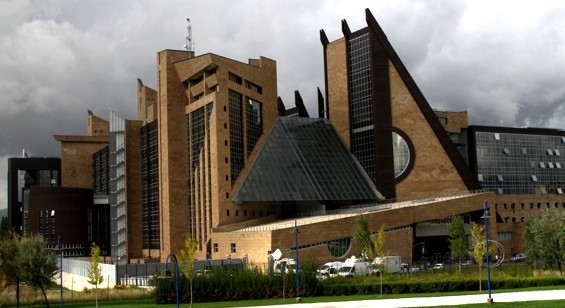
This seemed to be Sollecito’s own defence strategy, albeit implicit, since Bongiorno must restrain her action within the boundaries of her client’s plea.
In order to follow her strategy, however, Giulia Bongiorno decided to take a few steps which must be pointed out as particularly reprehensible and infamous.
I was surprised and stunned by those action because they qualify the character of Giulia Bongiorno as far worse than I thought, I really did not expect her to stoop so low.
The infamous part of Bongiorno’s speech is her gratuitous name calling and defamatory attack against Anna Donnino, her attempt to smear her professional reputation and the rude insult in calling her a “˜psychic’.
In real life Anna Donnino is a very respected professional, she has been working for the Questura on tasks of interpreter and language mediator (not as a “˜translator’).
She is also an intelligent person, she is precise and expresses herself with the utmost clarity as her lucid testimony shows.
She is known not only for having unquestionable professional ethics, but also she has an excellent reputation as a person; she is honest and humane and known by everybody for her extremely reassuring, protective temperament, and for her expertise and excellent performance of working with people.
She would help immigrants in difficulty to express themselves and understand their rights and was priceless helping the police to obtain precise information in their investigations.
As an expert in chuchotage and linguistic mediation from two foreign languages, the professional quality of her work is excellent. Her training and work is of interpreter and language mediator although sometimes shee is given translating tasks such as the translation of recordings and wiretappings.
The Questura of Perugia used to hire “˜language mediators’ at the time. You don’t know what a language mediator is? See a university course for a degree in Language Mediation.
The Questuras of some bigger cities also have “˜cultural mediators’ in addition. They are mother-tongue trained to deal with African or Chinese immigrants (one of the many young people having their internship as cultural mediator in a Questura is shown here.)
To me, this defamatory attack against Donnino was most disturbing. By doing this Bongiorno came across as surprisingly mean, I’d say what she did was really infamous.
Indeed this was not the only virulent attack, it came after insults to the city of Perugia as she was comparing its citizens to a mob of blood-thirsty fanatics.
This attack too is also particularly vicious, since it exploits, inflames and is subtly synergic with the tones of lies and prejudices disseminated by a perfidious propaganda strategy.
But at a certain point, Bongiorno focused the defamation against one person. As she unfolded a narrative about Anna Donnino acting as a “˜psychic’ who managed to hypnotize, to gaslight Knox to the point of inducing a state of trance in which she mistook a dream for reality, some people couldn’t help laughing in the courtroom.
But even if we consider the surreal and comical rather than the convincing effect, the defamatory intent stands out as reprehensible and humanly vicious.
This is because, as I said above, these particular insults were directed against a person distinguishable for her being a most decent, honest and trustworthy character, and also ““ a further reason ““ because of the recent events for which this person experienced personal suffering: Anna Donnino, a mother of teenagers, has been struck with cancer, and has undergone surgery.
She is under treatment but still currently remains in very bad health.
The attack against Anna Donnino is an action that rebounds as an ugly stain on the reputation of those who launched it. A young man from Perugia created a Facebook group to express a the citizens’ “hate” for those who lead a defamatory campaign of lies against the city. He collected over two thousand likes within three days.
Some of the comments were about Bongiorno’s insults against the city and against respected citizens, pointing out her outrageous hypocrisy since Giulia Bongiorno poses as a campaigner for the respect and dignity of women.
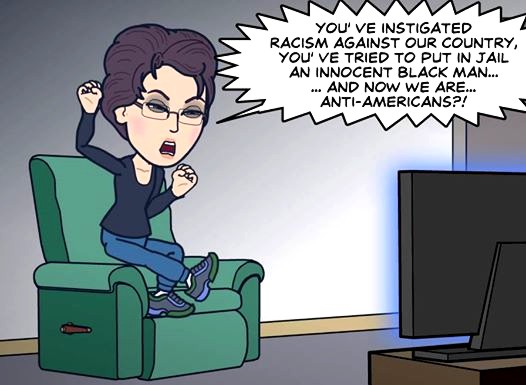
(a StripBit comment by a poster on a Facebook group)
Criticism of Giulia Bongriorno pointing out her hypocrisy is actually not a novelty, it has appeared long since in the press and on the internet.
But it’s hard to understand how someone like her, promoting an image of herself as an advocate for women and for correctness and respect in language and culture, could take such a an egregiously visible false step, come out with such stupid stereotypical rants, only for what looks like an awkward and useless cause.
Conclusion
A note for the record: we may recall Bongiorno has also attacked the Perugian police officers, citing the recording of some of their phone conversations in which they say bad words about the Sollecito family.
We can understand her outrage (at least we could, if only she were not the hypocrite she is) but at the same time we can’t fail to notice that she “forgot” to mention another half of the phone call recordings.
Specifically those where the members of the Sollecito family were speaking about the police officers; and the kind of language they were using, while attempting to plot “˜under the table’ help from some politician.
Expressing their intent to “˜scorch’ officers and “˜destroy’ magistrates, and one person even suggested that if he met Monica Napoleoni on the road, he would kill her by “˜running over her with the car’ then flee without telling anything, pretending that nothing happened.
Never mind.
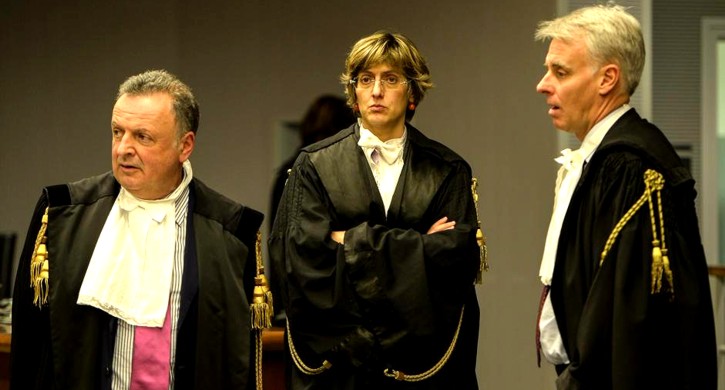
After these last sparkles and the knife waving Bongiorno’s performance was over. In the following day’s hearing it was Maori’s turn. As a really last resort, he was taking on the task of disputing evidence in a more “traditional” way, objecting to points of evidence.
Possibly this revealed even more the extreme weakness of the defensive argument (a commenter called it “˜pathetic’). I did not listen to his argument myself, I only notice that he did not get much space neither in the press nor in the pro-Knox commenting sites; this might be a clue of how unconvincing he might have been.
One thing that however I could learn about it, is about the feeling, the perception that Maori pointed out even more the separation between the two positions of Amanda Knox and Raffaele Sollecito.
A hint about this comes in the words of a journalist who was questioning Alessandro Nencini in the lounge immediately after the verdict: the journalist pointed out how Sollecito defence “tried to split the positions of the two accused”.
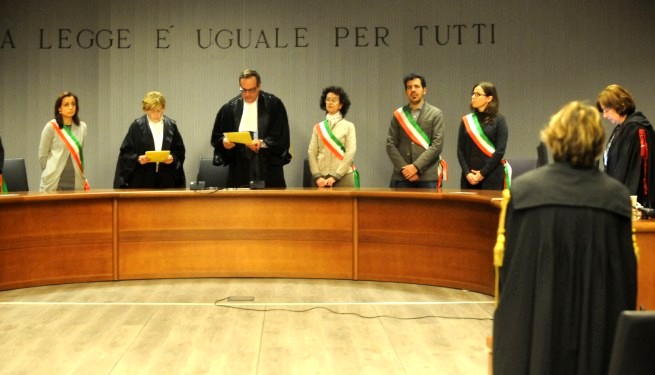
This mild attempt of a separation was the last act by the defence. As for Raffaele Sollecito himself, we were left with his rather different claim, his book where he described himself as sticking to a “˜honour bound’.
He reportedly bragged about this also with his ex-girlfriend Kelsey Kay, who described him as feeling very entitled because of his loyalty to Amanda Knox and believing she owes him a vital a favour; but Knox won’t even respond to his messages.
Then, we had his final admission in an interview that his friendship with Amanda Knox has “˜deteriorated’, because apparently Knox in practice no longer supports him as before.
If his defence advisors understood that they needed to somehow “˜separate’ his position from Knox’s at any cost, despite his plea, to suggest he may be implicated but just “˜less’ guilty, we may only agree with them on this. It would also be convenient for him to confess even if he shared the same degree of guilt of Knox.
Sadly, instead he still felt compelled to offer further lies and changing stories such as”˜I noticed no blood on the bathmat’ when questioned by Kate Couric; he offered again a story of pricking Meredith’s hand while cooking together at the cottage.
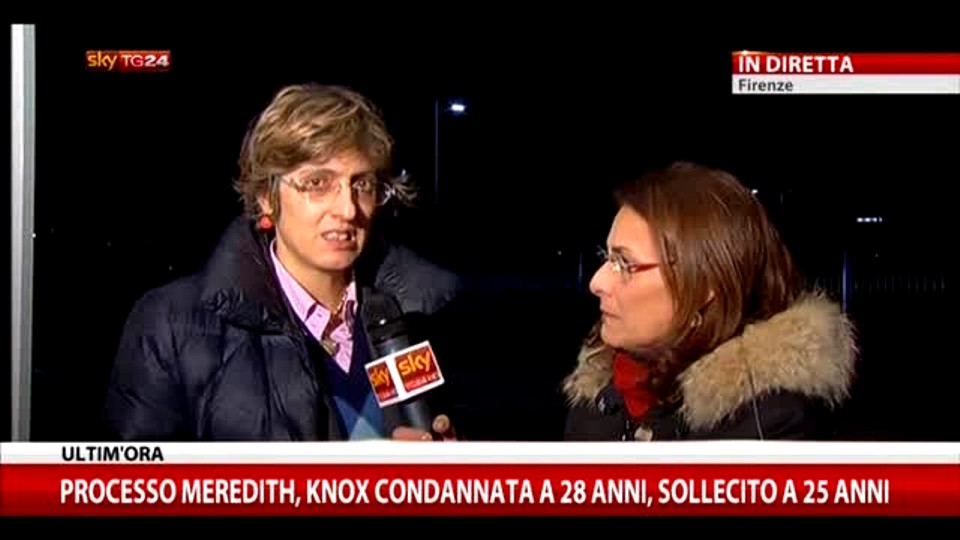
Other murderers, who committed even more heinous crimes, have recovered and rehabilitated themselves after time spent in prison; even some of those deemed among the worst serial killers managed to do this by expressing remorse ““ for example the rather psychopathic “˜Ludwig’ (Furlan & Abel) killers.
Sure after the years he will spend in jail for the gang-like crime he is found guilty of, there would be a possibility for a “˜casual murderer’ such as he is to be perceived as rehabilitated. But to see him as “˜less guilty’ or as “˜rehabilitated’ would be impossible as long as he remains silent or denies.
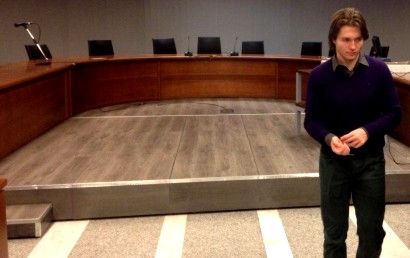
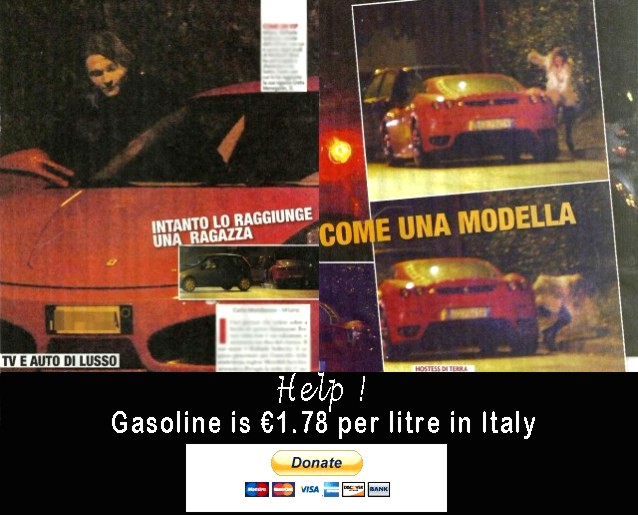
Wednesday, February 26, 2014
How Claims By Perpetrators & Their PR That THEY Are Victims Get Equal Pushback
Posted by Peter Quennell
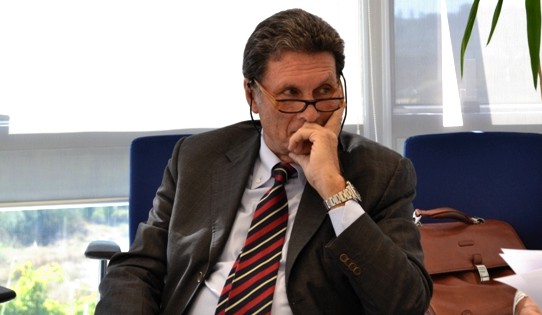
[Florence prosecutor Giambartolomei will soon confront many false claims ]
To the considerable pain of victims and their loved ones, Italy’s has become one of the most pro-defendant justice and penal systems in the world.
That doesn’t mean that it has become a complete pussycat. Push it, and it usually pushes back harder in its search for the truth. And the quality Italian media goes along.
Time and again the ill-conceived short-term PR and legal tactics for Knox and Sollecito based on a hurricane of lies have left them in terms of the ultimate end-game worse off than they were before.
Judge Matteini and Judge Micheli (the judges in 2008) both took firm lines with the copious evidence and the psychological tests of AK and RS in front of them.
Both judges took a line as firm as the prosecution (as firm as the “evil Mignini”) in concluding that there was a drug-fueled hazing escalating to murder with sexual aspects (however short the timescale of the intent).
[Ed note: See comment by Yummi below which explains the above a little differently. PQ.]
Though his panel of judges voted unanimously for guilt, Judge Massei in 2009 did take a somewhat less firm line in the sentences, after observing one daffy defendant and one very nervous defendant sitting in front of him for nearly a year. Judge Massei for no especially convincing reason
(1) pinned the initiating of the attack on Rudy Guede (really?!) and
(2) handed Knox and Sollecito (and thus Guede) quite a break with his supposed “mitigating circumstances” (the duvet over Meredith’s body) resulting in 20 years lopped off their combined sentences.
Both the defenses and the PR were weak and largely futile in that year. But come 2010 the dirty tricks moved into overdrive.
Cassation reverted to the firmer line in January 2011 when it ruled on Guede’s final appeal: Guede was a party to the murder, but copious evidence proved he did not act alone.
The Hellmann appeal court and DNA consultancy and verdict of 2011 were corrupted (counter-measures are still quietly playing out) which fully explains its startling soft line.
Thereafter the Italian courts observed the illegal blood-money binge with the essentially fictional books of Sollecito and Knox, and two years of them each claiming to ill-prepared interviewers “we’re the real victims” on TV.
Cassation observed all of this, annulled the corrupted Hellmann court verdict, and issued instructions in June 2013 to the Florence appeal court to ensure that the firm line should be maintained. Unsurprisingly, we have seen a firm line from the chief prosecutor (Crini) and a seeming firm line from the lead judge (Nencini) in recent weeks.
In the rest of this year Italy will see at minimum these events where the court’s firm line will go on and the babbling and unhelpful legal and PR tactics may finally dry up.
- 1) RS and AK continuing to babble for a while on TV as they each dig the other one deeper. Sollecito has just said that his saliva or sneezing may explain why his DNA was on the clasp of the bra.
2) The sentencing report of Judge Nencini is due at the latest on 30 April and he seems likely to give space to rebuttals of any bizarre new claims made by Knox and Sollecito before 30 April like the one just above.
3) The obstruction of justice trials of witness Luciano Aviello and incessant meddlers Mario Spezi and Frank Sforza will continue, probably though into 2015. Each of those trials could result in others (like Spezi ally Doug Preston and Sforza allies Bruce Fischer and Steve Moore) being declared at minimum persons of interest if not actually charged.
4) Florence prosecutor Giambartolomei Firenze (image above) may soon be announcing which passages in Sollecito’s book Honor Bound criminally defame Italian officials or deliberately miscontrue hard facts in evidence in an illegal attempt to to poison public opinion against the court.
5) Similarly soon after on Amanda Knox’s book with the surreal title Waiting To Be Heard (and on Knox articles and interviews in Oggi) by the chief prosecutor in Bergamo.
6) Cassation’s First Chambers should be the one to handle Knox’s and Sollecito’s final appeal. They handle murder cases and they issued the guidance to Florence in 2010.
7) If so, they should take note of such revelations by way of Judge Nencini’s and Prosecutor Crini’s reports; and this next autumn or winter may finally declare a firm “confirmed guilty” final-appeal outcome and invite Knox to come back.
And when prosecutor Giambartolomei Firenze announces which claims are radiocative, hopefully a major hush will come over Heavey, Fischer, Bremner and Moore.
Monday, February 24, 2014
Power Shift In Italy Very Unfavorable To Anyone So Stupid As To Thumb Their Noses At Italian Justice
Posted by Peter Quennell
Meet 39-year-old Matteo Renzi
Mr Renzi was sworn in by the President of the Italian Republic on Saturday as the new Prime Minister of Italy. As a top German newssite remarks, he is looking like a much-needed breath of fresh air.
Mr Renzi is colorful and dynamic and very popular, and may become one of the most effective leaders in recent Italian history and a major player on the world stage. Mr Renzi comes from FLORENCE where he was the popular and effective mayor.
Unlike the Berlusconi faction in parliament (which once included Giulia Bongiorno) Mr Renzi is a big friend of law and order, police, and justice. In the image at bottom you can see him opening the huge Palace of Justice in Florence with all the top officers of the court who just organized the appeal.
This is very bad news for Sollecito and Knox and their foolish gangs, as Mr Renzi will be very unlikely to look kindly on that same Florence court - and any court in Italy including, especially, Cassation - being flouted by convicted perps and made to look weak.
If the new Minister of Justice sends an extradition request to his desk, you can bet that he’ll send it on to the United States. And the US, very keen to stay on good terms with Italy as one of its 2-3 most reliable allies, will exhibit little if any resistance to the extradition of Knox.
More bad news for Sollecito and Knox
The sardonic Italian media is paying very close attention to the ongoing game of each of them pushing the other closer to the flames, and the almost-certain prospect of the two of them and Rudy Guede explosively flying apart.
The Italian media is picking up on signs that Sollecito has become highly resentful at his on-again off-again rejection by Knox, especially as many or most in Italy believe it was Knox who wielded the big knife that killed Meredith to which the other two had maybe not signed on in advance.
There are additional pressures headed down the pike. First, Rudy Guede will be given brief study leaves soon, and under Italy’s new “clear the over-crowded prisons (somewhat)” law Guede could even soon see himself released and free to talk.
Plus the investigators examining the criminal defamation of the justice system and officers of the court by Knox and Sollecito in their exceptionally foolish books are believed very close to announcing that a case against them has been made.
Sollecito’s father on national TV has already admitted that Raffaele lied about a deal to get him off, and this on Knox seems an open & shut case. Knox and Sollecito might face additional sentences of 3 to 7 years if they keep provoking a hard line.
Here are two articles translated by Miriam which summarise (not perfectly in our terms but good enough) the signs of the growing divide and the evidence that will see Knox and Sollecito back in prison.
Amanda Knox Will Return to Italy and Go to Jail, as Will Raffaele Sollecito, While Rudy Guede Will Be Freed
This scenario is not only plausible, but seems to be the natural outcome of the last sentencing of the Mez case. Few believe that the Corte di Cassazione could overturn, again, the verdict of the Corte d’Assise d’Appello of Florence.
So Amanda Knox will return to Italy and go to jail. For Amanda Knox, “her extradition is quite possible” Christopher Blakesely say without equivocation. He is one of the main experts on such penal proceeding in the United States.
The day after the verdict of the Corte d’Assise d’Appello of Florence, Giovanna Botteri, the RAI correspondent in the USA, reported something similar, underlining that Amanda rushed to CNN to cry all her tears didnt help.
Knox uses even the social networks to scream again her innocence, but the law says something different.
Even Italian popular opinion seems not in Amanda’s favor : Perugia, through the social networks, has literally screamed its disagreement and displeasure against Amanda (read: L’Urlo di Perugia: a Facebook page against Knox: from the people of Perugia)....
Rudy is at the moment the only one sentenced in jail…. How does Rudy reconstruct that night? Rudy swears to having consensual sex with Mez.
After the intimate relation Guede went to the bathroom and from there he heard her scream, rushing to her room he found her in a pool of blood, and tried to help her. Realizing that Meredith was dead, in shock he ran away.
On the plausibility of this reconstruction, the judges had numerous doubts, to the point of finding Guede guilty and sentencing him.
This reconstruction, according to his lawyers, explains not only the biological traces of Rudy all over the crime scene but also his flight.
How does Amanda reconstruct that night?
Amanda continues to sustain that she did not wield the knife that killed Mez, that she heard her scream while she was in the kitchen and that she covered her ears like a scared child.
The “whys” are many and heavy. Why did Amanda accused Patrick Lumumba, incarcerated for 14 days while innocent, due to her ignominious accusations? Why on the knife used for the murder are there traces of Mez and Amanda?
Knox DNA was on the handle of the knife that killed Meredith: only because she used it to cut potatoes? The alibi of the potato has always been used by Knox and her lawyers, but it is plausible?
And Raffaele Sollecito?
One of the most decisive evidence against Sollecito in the first trial was the bloody foot print on the bathroom math. In the appeal process that footprint was challenged, it was said that it could be not Sollecito’s and was ascribed to Guede with benefit of doubt .
Now it seems certain that Rudy was wearing shoes ,as is demonstrated by other prints at the scene of the crime, thus the bloody footprint goes back to being ascribed to Sollecito.
Why is Rudy Guede in jail while Amanda and Raffaele are on the loose?
After the verdict of the Corte d’Assise d’Appello of Florence the appeal to the Cassazione, was announced, while waiting for the Cassazione, the guilty Raffaele Sollecito had to hand over his passport in order to make it impossible for him to leave Italy.
Right after the sentence Sollecito was stopped in Udine about 60km from the Italy/Austrian border and about 40km from the Slovenian border.
Before the verdict of Corte D’Assise d’Appello of Florence Sollecito was a free man, and therefore legally in possession of a passport and the right to cross the border.
Sollecito, instead of waiting for the verdict in the court room, around 12 o’clock that day left with his new girlfriend and arrived in Udine [in north-east Ital]..
Around night time during a snow storm the two of them took refuge in an hotel , and the owner recognizing Sollecito by name, alerted the police that promptly arrived in order to confiscate Sollecito’s passport as decided by the Court.
Sollecito told the media that he had no intention of fleeing the Country.
One can ask what Sollecito was doing in Udine then, a few hours after his guilty verdict. To excuse Sollecito one can perhaps say that the young man was overpowered by anguish and fear, in fact up to today
Sollecito had never seemed to want to evade justice, instead he was usually in the Courtroom.
Amanda in contrast was not sanctioned with any precautionary measures. She arrived in America as a free citizen after the not guilty verdict.
Now, if and when the Cassazione confirms the verdict of the last proceeding, America needs to extradite Amanda and remit her in the hands of the Italian Justice…
America is tied to Italy by sanction accords by name of international laws, thus if the Cassazione upholds the guilty verdict, Amanda must return to Italy. Nothing makes one think that America could oppose an extradition.
Rudy Guede is the only guilty one in jail at the moment. His detention was confirmed after a fast track trial, decided by his layers, and his detention was 16 years in jail. (with time off for the fast track trial)
Not many know that while the doors of the prison may soon open for Amanda and Raffaele,, for Rudy instead “freedom” may be close by.
Thanks to the new decree passed last December by the Parliament, Rudy could leave the prison where he is detained. Guede is one of 3 thousand detainees who could benefit from the “empty the prisons” decree.
Raffaele Sollecito and Amanda Knox are close to a break up after the sentencing..
Raffaele wrote Amanda a letter saying: “Amanda I am tired. I don’t want to be punished, neither do I want to continue to give justifications for matters that concern you and not me”.
Amanda says “I understand him but: I want to say that Raffaele is not my slave and I am not his oppressor. Raffaele has many reasons to be resentful, but not with me.”
The bond between the two, accused of the homicide of Meredith Kercher, is cracking. A bond that lasted from that horrible night of November1st 2007, when in a house in Perugia, via della Pergola, their English friend was savagely killed.
Looking at a concrete possibility that the Judges of the Cassazione will confirm the sentencing which condemned Amanda and Raffaele to 28 years of jail for her and 26 for him, the two ex-lovers are starting to distance themselves from each other.
Amanda took a picture of herself holding a sign that read “we are innocent” so as to underline a common faith, from which Raffaele can’t dissociate. Not anymore.
Raffaele after six years may be starting to understand that being Amanda’s “fiancé” did not help him at all. He said this to Giulio, in an interview a few months ago, and now in an interview to CNN:
In the Judges head I must be guilty because I was Amanda’s boy-friend. It does not make any sense for me. According to the Judges because in some way I supported Amanda, I must be implicated. According to me this is aberrant. My standing has not been just ignored, but completely forgotten. In all the proceedings I was not part of them unless for the scientific investigations.
For many, many hearings the topic was my DNA, but nobody said nothing of the reason why I was accused of the homicide except the fact that I was Amanda’s boy-friend and because I was with her very often and spent many nights with her, I had to be in some way connected with the homicide.
Is Raffaele’s defense thinking of ditching the girl? Is Raffaele ready to tell the truth of what happened that night? Now Raffaele is in Bari, and is thinking over what happened to him. He reveals:
I discussed with my friends and family the possibility of going abroad a year ago, but I cannot accept the fact of leaving all the people who are dear to me for a theory. I had no motive to hurt Meredith Kercher.
Now I have no light in my future. They took away my passport and I.D. card, and I do not know if I can realize my dreams, or anything I want to do. I do not accept that my future is destroyed.
Too often, though, Amanda and Raffaele forget to mention that Meredith’s life really was destroyed.
Against Amanda and Raffaele there are scientific evidence, bloody footprints on the floor, DNA on the bra clasp and knife, and the many contradictions in their alibis.
From the beginning their behavior caused the carabinieri to be suspicious of them.
Without forgetting the spontaneous confession of Amanda of being in the house while her friend was being murdered. “I have a vision of being in the kitchen, covering my ears while they kill her.” She even gave the name of the killer Patrick Lumumba, her boss, who was then discovered to be innocent.
The attempt to divert the investigation, pointing the finger against an innocent man, is evidence of the quilt of Amanda.
Even Raffaele changed versions more than once. In one of the interrogations he said Amanda was not with him that night and arrived at his apartment in the early hours of the morning. He then said he smoked too much marijuana and could not recall what happened that night.
In the meantime Rudy Guede, 27 years old, condemned to 16 years for the murder of Meredith Kercher, with others, writes:
Now that my verdict is definite, for too long the judicial reasoning have been subjected to a continuous and willful manipulation and alteration of the data of the proceedings… I would like to point out that I do not accept being labeled as a homeless man, drifter, and a thief; when instead I had a splendid family and precious and clean friendships in Perugia.
Amanda Knox’s defense team wants to pass him off as a habitual thief. Rudy adds: ” “Meredith’s house was turned upside down, someone simulated a break in. I was not condemned for this simulated break-in.”
If it was not Rudy, then who?

